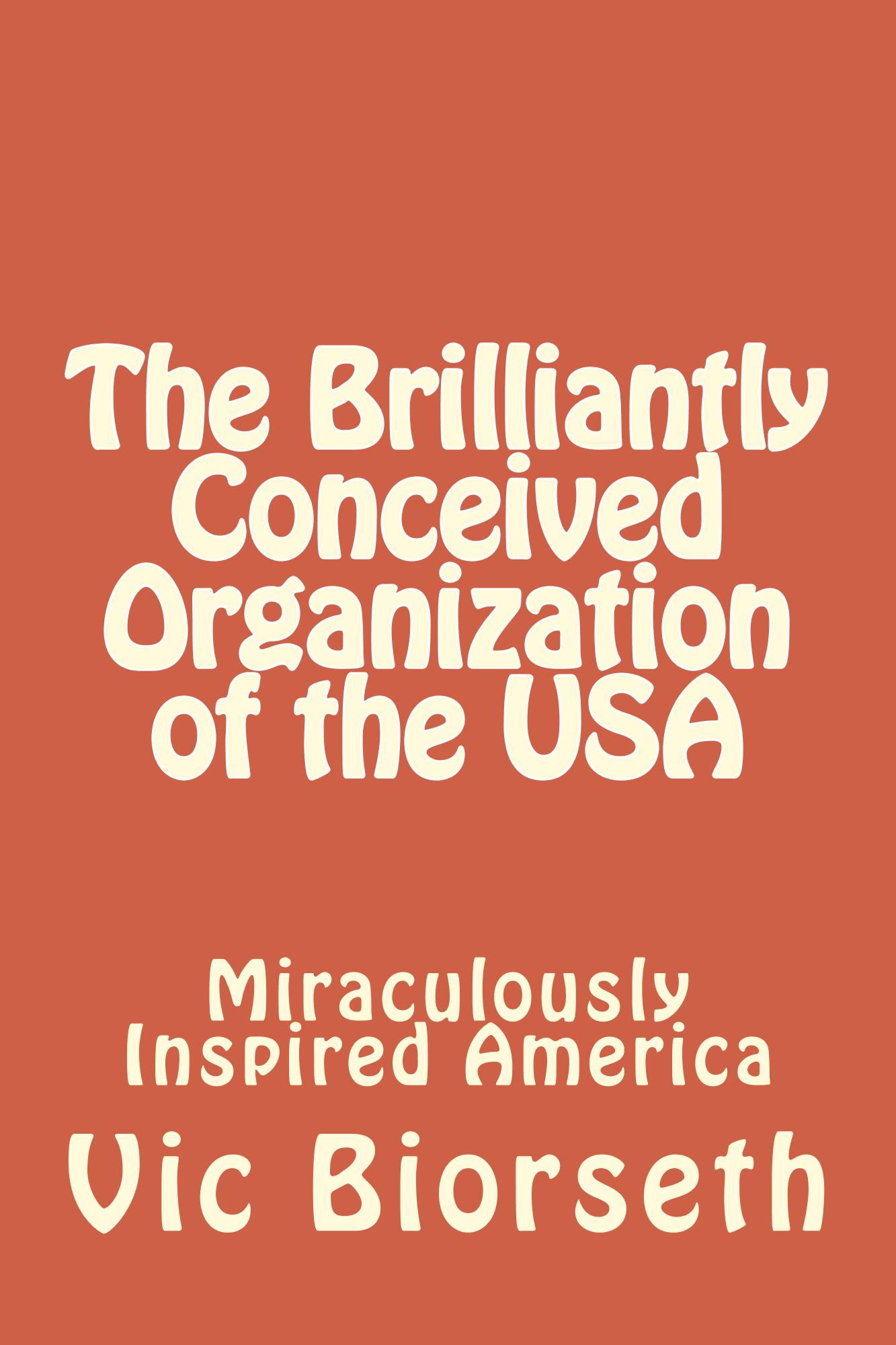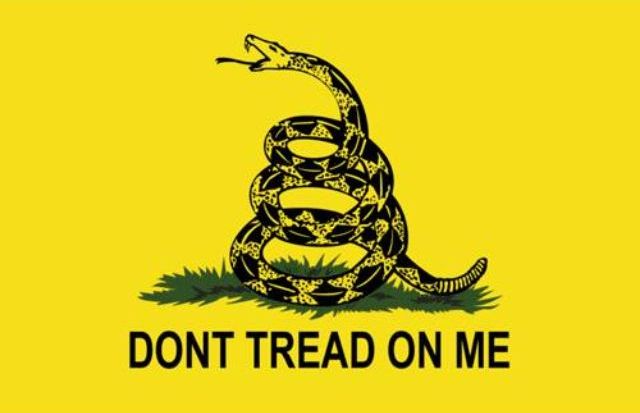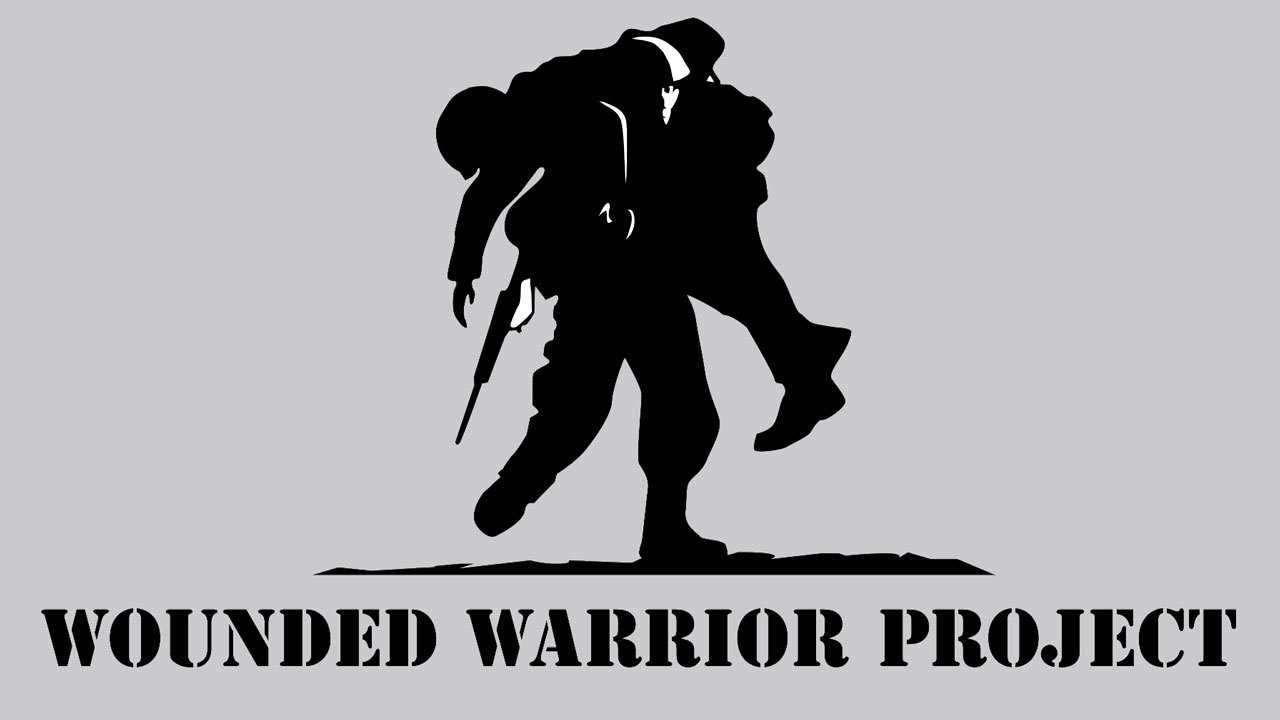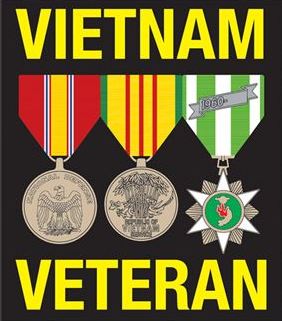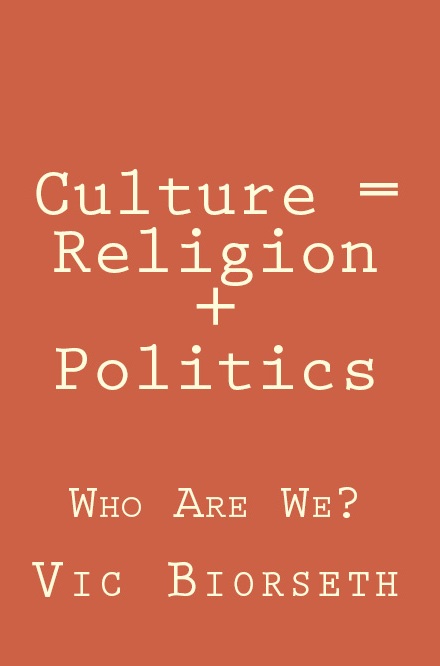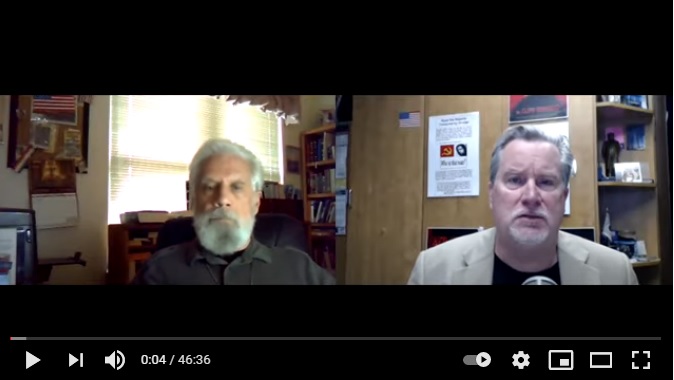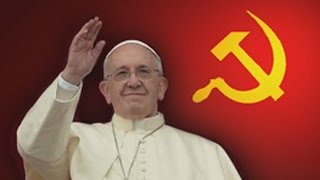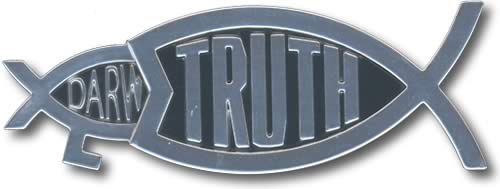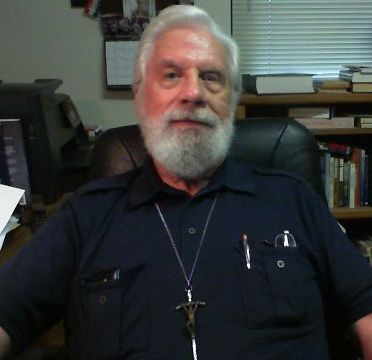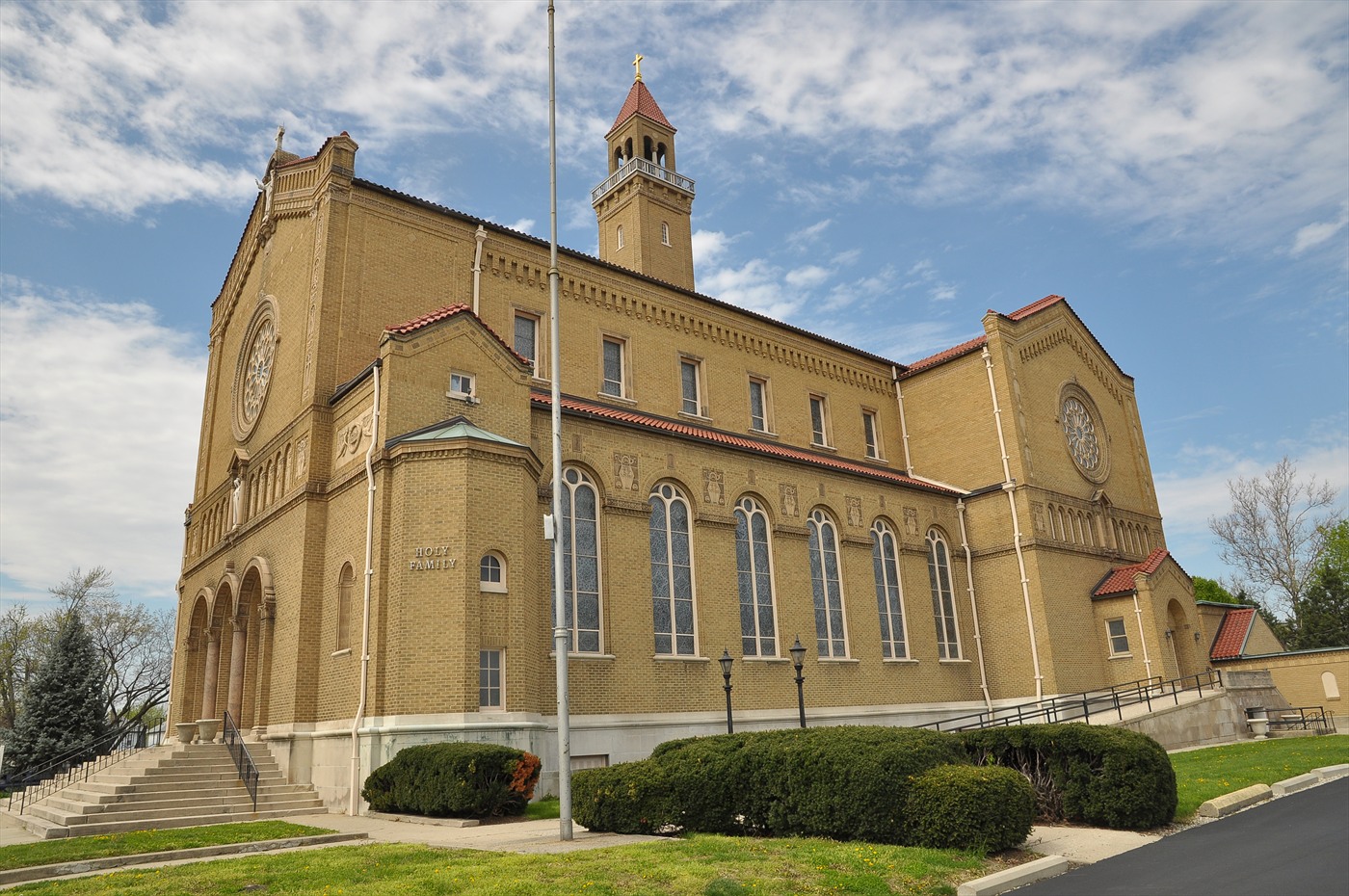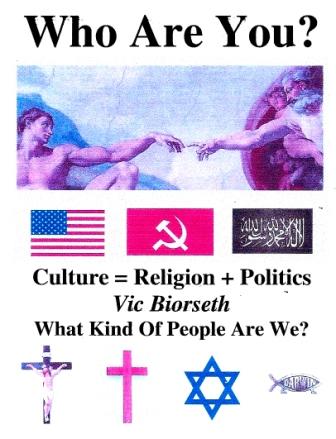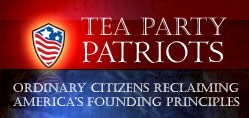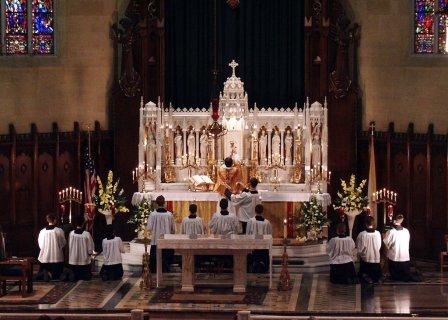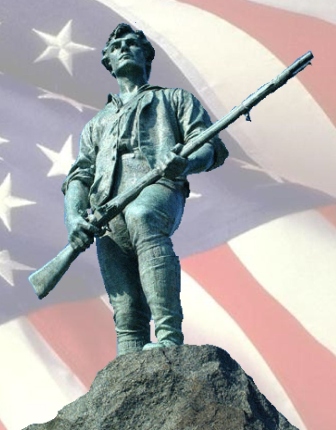Formerly the Thinking Catholic Strategic Center
Confirming Culture=Religion+Politics
The Christian Medieval Crusade, the preceding events, and the aftermath.
The Medieval Crusade describes what is popularly called The Crusades; Christendom's attempt at self defence, and the freeing of the Holy Land.
Vic Biorseth, http://www.CatholicAmericanThinker.com
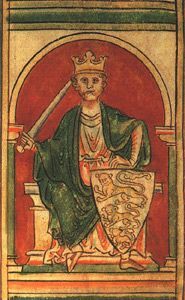
Richard Lion Heart is often depicted as the iconic representative of the Medieval Crusade, the Crusaders themselves, and of Chivalry, and not without some good cause. But many who portray Richard in heroic ways also portray the Crusades themselves in an overly positive light.
In as similar manner, many, perhaps most, teachers of history today portray the Crusades as a series of monstrous murder-fests, done by Christians in the name of Christianity, which proves the underlying murderous nature of Christianity. Or, when the Teacher is a Protestant, it proves the murderous nature of Catholicism.
I even have in my hand at this moment a Catholic Church History text book, which was the required text for some of my studies, and it historicizes the whole of what’s commonly known as The First Crusade into a few brief sentences, as follows:
The First Crusade lasted four years, from 1095 to 1099. Some twenty thousand peasants tramped idealistically eastward. When this vanguard of starving marauders reached Muslim-controlled Turkey, they were slaughtered to the last man, woman and child.
This disaster didn’t dissuade a group of French nobles, who had
organize an army of some thirty thousand. They marched on Jerusalem.
Acting out of vengeance, they killed the entire Muslim population. And,
as if to celebrate their good fortune, the burned the city’s Jews alive
after locking them in their synagogue. Four powerful noblemen then
divided the Holy Land into four territories, which they ruled as their
own kingdoms.
[People Of God; The History of Catholic Christianity; Anthony E. Gilles; St. Anthony Messenger Press; Pg 66.]
That’s it. Now, how’s that for a “Catholic” history of the First Crusade? That's the way they teach supposedly college level Church history in the Archdiocese of Cincinnati.
This is my small attempt to set the record straight, for a lot of people like myself who might have been miss-educated on the topic. Medieval Crusade is the term I use for all of the various crusades, because they all amounted to one, long, on-again – off-again effort at the defense of Christendom from the onslaught of Islam in general, and the freeing of the Levant, or Holy Land, in particular. Different historians number the Crusades differently, ranging from six to ten to even twelve. I call them all, collectively, the medieval Crusade.
If you number them by specific, serious, raised and organized armies to invade or reinforce or retake ground, then, only three are of major historical importance. Those are the first, which took Jerusalem; the second, sent to re-take one of the cities taken back by Islam, and which met with disaster at Hattin; and the fourth, which represented an almost unbelievably long string of tragic-comedy of events that no Hollywood writer could even dream up. This was the Byzantine 4th Crusade, which ultimately sacked Constantinople, and never even made it to the Holy Land.
After the first medieval Crusade, known as The Great Crusade, there were no more real victories for Christendom. There was a lack of a unified and comprehensive strategy, and there was a clear lack of occupying manpower. The first medieval Crusade failed, or rather, the gains it made were eventually and inevitably lost, solely because of the lack of manpower, and the failure to have taken Damascus. And, they failed to take Damascus at least partially because of the failure of Christendom to supply the needed manpower. It always came back to that. The entire enterprise was continuously at risk while Islam relentlessly gained strength. The second medieval Crusade sought to retake a lost city, but ended in disaster on the plains of Hattin, where a major Christian army was destroyed. That, essentially, marked the end of Christian chances in the Levant.
A third medieval Crusade fought important, even epic battles, but it failed to re-take Jerusalem, so what’s the difference? The most likely reason that Richard did not march on Jerusalem was the obvious fact that, if he took it, he couldn’t hold it. After the rise of Saladin, and the disastrous defeat on the Horns of Hattin, it was only a matter of time. Islam was on the rise and the Christian kingdoms could not or would not supply more manpower. The whole medieval Crusade was strategically finished at that point, although many of the participants didn’t know it yet.
This is a discussion of the medieval Crusade to free the Levant, meaning the Eastern shores of the Mediterranean and Palestine. A separate essay will be devoted to the Byzantine Fourth Crusade because of its complexity. Too much happened in that incredible Crusade to try and include it all here.
The Nature of the Enemy who was the target of the medieval Crusade is seldom if ever discussed in histories of the events. It is of vital interest to know who the Crusaders were opposing, and why. We need to know what Islam was, and we need to know why and how it advanced so quickly to almost miraculously conquer thousands of miles of territory, with a suddenness unparalleled in all of history.
I have elsewhere declared Islam to be an intolerant, murderous ideology of world conquest. This is not merely an arguable “opinion” like so many others; it is a testable and independently verifiable statement of fact. Select the Islam Opposes America Page in this site for the crystal clear, fully orthodox and perfectly mainstream Islamic teaching that existed at the time of the medieval Crusade, and that still exists today, unchanged. Here, permit me to simply paraphrase the great Hilaire Belloc who wrote on the subject as long ago as 1937, in The Crusades, and 1938, in The Great heresies.
Mohammedanism, as it was called in those days, was a heresy. That is the essential point to grasp before going any further. It began as a heresy, not as a new religion. It was no pagan system, and it was no completely alien enemy. It was a flat out perversion of Catholic doctrine. To the men of the desert it had the appearance of a new religion, but Christians who encountered it saw it for what it was – an adaptation and a gross misuse of Catholicism. It differed from most heresies in that it did not arise from within the Church. The chief heresiarch, Mohammed himself, was not a man of Catholic birth and doctrine to begin with; he was raised as a pagan.
But what he taught was Catholic doctrine, grossly oversimplified, and twisted. Through commerce and travels he had encountered Christianity, which could hardly be totally avoided, and he gained his first disciples in lands never entered by Christians. His theocracy burst forth onto the Christian scene from out of the Arabian wilderness, the conquest of which had never seemed worthwhile to Greeks or Romans. He maintained very few of the old pagan ideas which might have been native to him; on the contrary, he preached and insisted upon a whole group of ideas unique to the Catholic teaching, and distinguishing it from the paganisms Catholicism had previously converted within the Greek and Roman civilizations.
The Orthodox Catholicism in the new “religion” of Islam that precipitated the medieval Crusade:
- Unity and omnipotence of God
- All-goodness and providence of God
- God’s creative power as originator of all things
- The world of angel and spirit beings, with a head evil spirit
- The immortality of the human soul
- Human responsibility for actions in life
- Equality of all men before God
- Doctrines of eternal reward or punishment
- Highest reverence to our Lord Jesus Christ
- Our Lord to be the final judge of mankind
- Holiness of the ever virgin Mary, virgin mother of our Lord
The Heterodox Catholicism in the new “religion” of Islam that precipitated the medieval Crusade:
- Denial of the Divinity of our Lord
- Denial of the Incarnation of our Lord
- Denial of the Resurrection of our Lord
- Denial of Jesus as the greatest prophet
- Denial of the Trinity
- Denial of the Eucharist
- Denial of the Mass and of all Sacraments
- Denial of the priesthood and of all Church hierarchy
- Denial of all liturgy
- Etc.
Now if you only look at the orthodox teachings of Mohammed and do not look at the heterodox teachings, you might think that everything is fine here and there is no problem. But there is a big problem. There is more teaching that has nothing to do with Catholicism, other than to oppose it. Islam is a religion of force and of domination. The very name, Islam, means, precisely, Submission. It is a “religion” of the sword, and of conquest, in which you are saved not necessarily by your own free will choice, but by your submission to the religion. Even granting that there is more to it than that, involving the internal jihad and seeking increasingly perfect submission to God, it must be said that, for the non-Moslem, the only path to salvation (and survival) begins with personal submission to the authority of Islam.
Islam is and has always been a pure theocracy. It is a radical combination of Church and State, in which civil law and ecclesial law are one, and they are inseparable from each other. It is a form of government. It is intolerant of and cannot indefinitely coexist with any other religion, or with any other form of government. It is by design an ideology of conquest, pure and simple.
The simplification of Mohammed’s “new religion” made it easy to preach quickly and easy to understand, with no complexities of Sacrament, liturgy or priesthood. The single godhead simplicity and the notion of equality of all men before God resonated in the pagan breast. It offered a new sense of freedom to the slave and to the debtor; it was a way to escape slavery and a way to escape debt, by picking up the sword and joining in the conquest. Even when the slave remained a slave, as when both he and his master submitted, the slave achieved a new dignity and respect, through the equality of all before God doctrine. The prayers were simple, universal and easy to learn.
The onslaught of Islamic Theocracy that conquered the Levant, all of North Africa and much of Europe, and that precipitated the medieval Crusade is seldom taught, as an integral part, of the history of the medieval Crusades. Or it is softened to appear to be a conversion rather than a military conquest via holy war. Why that is, I don’t know with certainty, but it is a fact easily proved by the examination of various contemporary history texts that treat the subject. Usually the medieval Crusade is presented as a Christian attempt at open conquest of non-Christian land, or, in the best cases, as an attempt to drive out conquerors of the Holy Land.
Rarely does any contemporary Western-authored history of the medieval Crusade speak of the preceding forcible conquests by Islam. Rarely is it even mentioned that all of the “converted” African (and all other) lands fell to Islam not due to willing conversion, but under the sword of conquest, with no exceptions. Nor is it often mentioned that all of those African lands were previously Christian lands, or that they didn’t become Christian by force. The term holy war is applied the most frequently to Christianity, and the least frequently to Islam. I suspect that the reason is that atheism-secularism has increased its influence on Western culture academia to such a degree that all new histories must now be presented in an anti-Christian light. The religion that Western culture secularist academics target the most is Christianity; therefore, the medieval Crusade history must be taught to reflect most negatively upon Christianity.
Shortly after Mohammed’s death in 634 A.D. his Arab followers broke forth as a swarm of eager desert cavalry, sweeping north, east and west, conquering and forcibly converting everywhere they passed. New converts became new warriors, and the hordes continually grew. The religion was simple of comprehension, freeing of vassalage or any political subservience, freeing of taxes and of debt, uplifting of the individual and most of all it was uplifting of the lowest of the low.
Waging Holy War, they conquered, garrisoned and were governing Syria, Mesopotamia, Persia, to the mountainous borders of India and up into the Steppes of Asia. In the West, they did the same in Egypt, all across North Africa, crossed the straights of Gibraltar into the Iberian peninsula in what we now call Spain and Portugal, and for a short time on up into the middle of current day France. They possessed all of the southern and eastern shores of the Mediterranean, and virtually all of the important Islands therein, including Crete, Malta, Sicily and Sardinia. They had established fortified beachhead settlements on the shores of Italy, Gaul, and right across the English Channel from Britain.
Long before the first medieval Crusade began, there were vast numbers of orthodox Christians living in Moslem conquered lands, holding no political power and paying vast tribute and taxes to their conquerors, and to their own fellow citizens who had, in great numbers, joined the religion and the armies of Islam. These orthodox Christians who had been overrun in many cases were still able to communicate with other Christians in other lands who had not yet been overrun. It’s important to understand Western man’s mindset in the times leading into the medieval Crusade period.
Many viewed the relentless advance of Islam in a manner similar to how many later viewed the relentless advance of Communism in or nearer to our own era, when Communism quite realistically threatened to sweep in the world. Islam was a highly unified and unifying movement, in a world of kingdoms, fiefdoms, communal village organizations, city-states, monastic orders and other entities, all bound up in an extremely complex hierarchical web involving layers and layers of vassalage and fealty. Nations as we know them today did not exist yet. The only common unifying thread that held Western culture together was the Catholic religion and ethos.
While Islam presented a unified system of ecclesial and civil organization, Western culture, while unified in Catholicism, was comprised of antagonistic, self-interested noble factions, who alternately opposed and allied with each other, and fought all sorts of feudal wars. Islam thus presented a united front against a factionalized West that appeared to be incapable of unity in a cause. Wherever Islam was beaten back, it was done by one or two nobles and their forces, not by a completely unified “nation,” or alliance of nations, because nations didn’t exist yet.
Medieval Western culture watched the successes of Islam with absolute dread. Hilaire Belloc wrote of Western political intrigue that was
“… mixed up with an ‘intellectual’ disease comparable to the movement today in Europe by the barbaric names of ‘Pacifism’ and ‘Anti-Militarism’”
which threatened to politically undermine any medieval Crusade against Islam. Just before the first medieval Crusade, Islam was slowly being beaten back in Western Europe, driven to the Pyrenees and beyond, suffering further losses in present day Spain. But it had never successfully advanced against Christendom in the East. Byzantium stood strong. The Pope was in Rome, but the Emperor was in Constantinople, and no one considered the possibility of any Islamic threat against the strength of the Emperor.
The Seljuk Turks would initiate the action in Byzantium that would set in motion the medieval Crusade. Mongols had for centuries invaded Europe, and had been beaten back, with many settling in the neighborhoods of the Black Sea and the Danube, where today the word “Hungary” perpetuates their name of Huns. A new horde of Mongols, of Tartar ancestry, came out of the Steppes and were quickly converted from their paganism to Islam. They became not only Moslems, but fanatical Moslems; from their number would come the bodyguard of the Caliphs, and they would become the real power behind the advance of Islam, acting in the name of the Commander of the Faithful. They were descended from the clan of a once famous Tartar leader named Seljuk, and they would come to be known as the Turks.
They were smallish men of excellent horsemanship. They rode fast, in an unusual style, with too-short appearing stirrups, high up on the horse’s withers, crouching low over the horse’s neck, with their small, circular targets (shields.) They were skilled at shooting the short bow from horseback at high speed. Relay after relay of rank after rank of them would race past an enemy loosing accurate arrows at them. Each rank would wheel and turn just in time for the next relay to arrive and loose their arrows and do the same; eventually the relays would begin riding into their enemy using their other weapon of choice, a long, curved, thin-bladed sword called a scimitar. This was a massive force of light cavalry such as the world had never seen, and there were hundreds of thousands of them.
This Mongol horde, greater and more savage than any before, now poured into Asia Minor, and Byzantium.
The Holy Roman Emperor, Romanus Diogenes, went out to meet them with some sixty thousand heavy horse. Though vastly outnumbered, they had every hope of victory; they had faced many barbarian hordes before, and had superior weapons, armor and tactics for the occasion. In that day and time, no cavalry in the world could withstand the onslaught typified by a shoulder-to-shoulder charge of Western or Byzantine heavy horse. They met the Turks near the frontier fortress of Manzikert.
Romanus’ problem became apparent immediately; it was the terrain. While he did a good job of using his reserves to prevent envelopment of his main line, his heavy horse could not close with or make contact with a force comprised in its entirety of light and fast cavalry. They could retire before him faster than he could advance, in any and all directions, and they continually did damage with their arrows. There was no geographic feature, such as a river, or a shore, or a cliff, or a mountain, or a castle wall, toward which he could shepherd and eventually pin the Turks, and then just run them down. The Turks would simply outrun the charge, and then come back again, firing their arrows.
Heat exhausted heavy horses began to collapse, putting armored men on foot. Sun-baked armor forced men to remove some of it, presenting more opportunities for the incessant racing relays of arrows. Eventually Romanus was forced to retire back to his original camp; the orderly withdrawal gradually became something more akin to a route. His reserve deserted the field, his main force was wiped out, and Romanus himself was wounded and taken prisoner.
The Turks then laid waste to all of Asia Minor, pillaging and killing wholesale, burning and destroying permanent buildings and destroying wells everywhere. It was behavior typified by Islam in general and the Turk in particular, in that it was diametrically opposed to the long established Roman or Western way. The Western (and Byzantine) attitude was to improve land over time, to build roads with way stations, wells and well garrisoned outposts in order to make travel safer, easier, and improve commerce. What the Turk left behind him was waste. Broken bridges, pulled-down buildings and filled in wells. Slaughtered populations, herds and flocks, burned and salted fields, and vast areas difficult if not impossible to travel through. This was the destruction of safe travel and commerce over vast areas.
Perhaps this destructive tendency was born of an innate hatred in the breast of the nomad for those who permanently settle the land. Destruction of wells, in particular, meant that whoever visited would need to keep moving, or die of thirst.
It was this behavior that turned the tide in Western thought. Even the Arab Moslems, murderous as they were, appeared as gentlemen when compared to the Turks. Stopped only by the Bosphorous, the menace came to the very gates of Constantinople. Eastern Christendom was destroyed, and all of Europe was now open to invasion and at risk, and they knew it. This was the immediate threat that prompted Pope Urban II to call for a Holy Crusade; but before we discuss that, we should look at the changes in the Holy Land brought about by the Turks.
Although Jerusalem was in the hands of Islam through the preceding centuries, Christian pilgrims had been allowed free access to the holy places and their churches were left undisturbed. Under Hakem, the Fatimite Caliph of Egypt, for some period this changed radically. He ordered Christian holy places, including the Sepulcher of the Lord to be destroyed, and Christian pilgrims to be murdered. After a time, this savage policy was softened and pilgrims were allowed access after paying a heavy tax.
But then the Seljuk Turks gained power, and throughout Jerusalem, Christian churches were burned, Christians were slaughtered and all Christian pilgrimages were stopped. Desecration of Holy Places, torture and murder of Christians became the normal order of things. All of this preceded the disaster at Manzikert, which left all of Europe undefended in the East, and open to invasion.
As news of Manzikert spread across Europe, the eyes of all the nobles began to turn to the East. They were primed for the medieval Crusade; all they needed was some sort of unifying force.
Pope Urban II made the first call beginning the medieval Crusade in 1095 in Clermont. Europe was more than ready. Perhaps some were too ready. Enthusiastic mobs from various places, mostly in Germany, began a disorganized straggling, chaotic and anarchic movement eastward, causing significant disruptions of peace along the way. Large bodies of men need supplies; these disorganized mobs had none, and so they had to forage along the way. In other words, they robbed fields and farms and houses and towns as they went along, just to eat.
Feeling guilty perhaps about taking from fellow Christians, they sought out Jews to take special advantage of. They even massacred Jews, and they tried to storm palaces of bishops who were protecting Jews. The nobility mostly let them pass, seeing in them no real threat, since they were disorganized and so lightly armed as to be disarmed. But their numbers were such that forcibly intervening would have been very ugly, and no one knew what the pope might say. Many of these groups and their leaders or inciters are numbered by various histories as medieval Crusade number such and so, but these cannot be seriously considered to be part of the medieval Crusade.
They all met with disaster, one way or another. These were not men-of-arms and they were not fit for battle against any sort of real foe. The ones who actually made it into Asia Minor were all immediately killed by the Turks. But, by their scavenging and ravaging, they made the path of the real medieval Crusade much more difficult to travel.
Godfrey of Bouillon, Duke of Lower Lorraine led the host of the first medieval Crusade. Other important leaders of the first medieval Crusade armies were Raymond IV of St Gilles, Count of Toulouse; Bohemond, Duke of Taranto; Hugh, Count of Vermandois and Robert, Duke of Normandy. The overall intent was to drive the Turk out of Asia Minor and continue driving him before them, all the way out of the Levant. Few considered the Great Schism of 1054 to be anything more than a temporary ecclesial argument between the Pope and the Patriarch of Constantinople. Byzantium was seen to be a continuance of Christendom, and it was Christendom which was to be defended against the fanatical Moslem holy wars and invasions.
Medieval culture had certain rules of war, which were considerably different than those that are recognized today. Raising an army, provisioning and feeding it was a very expensive proposition, not often and not lightly undertaken. The greater the distances to be covered between replenishments, the larger the baggage train needed to be. Culture was organized in accordance with suzerainty, which involved oaths of fealty and vassalage. A suzerain was a feudal lord to whom vassals would pay tribute. Lords of domains would use this system to the utmost to raise funds to pay for the support of the army. Any entity that was a vassal to the Lord and who was in arrears could be visited by the new army to settle accounts, and then some, before the army was used for whatever original purpose it was raised.
If a medieval army besieged a castle or a city, the occupants were free to negotiate a surrender and save themselves, at some cost. If it did not surrender and it fell, then the victorious army could be turned loose for precisely three days of looting and pillaging of the city, which could even involve murder of any inhabitants who resisted, or who had shown particular defiance to the besiegers. Not pretty, but those were the rules as they had evolved through centuries of warfare, and everybody understood them.
Knowing this rule, most Lords or rulers of places would ahead of time simply offer food, water and provisions to a passing army, knowing that an army that is fed is less likely to forage too much, or to seek additional loot.
The first medieval Crusade leaders swore allegiance to Alexius when they arrived in Byzantium. They crossed the Bosphorous and besieged Nicaea, with considerable action and losses on both sides. Agents of Alexius negotiated a surrender and distributed tribute, food and money to the medieval Crusade, and the city was not pillaged. The first medieval Crusade marched on.
Bohemond was ambushed at Dorylaeum and fought a hard battle until Raymond suddenly appeared and turned the flank of the Turks, putting them to route. This was a major battle in which Western equipment and tactics proved more than a match for a much larger number of Turks. The medieval Crusade marched on; for reasons unclear, Alexius and the Byzantine forces did not continue on with the medieval Crusade.
Baldwin effectively annexed Edessa, deep within Moslem lands. They attempted to besiege Antioch, but the fortifications were too extensive and well manned; the medieval Crusade couldn’t even surround the place, it was so large. By intrigue, Bohemond was able to gain access to one of the towers, and the Crusaders swarmed in and took the city. Just in time to be themselves besieged by a huge army of Turks who had arrived on the scene.
The Crusaders were vastly outnumbered by the new besieging force of Turks, over 200,000 strong, led by the Chief Kerbogha, and it looked like the end of the story. Kerbogha had hurriedly gathered fighters from many sub-clans of Turks, and raced to destroy the medieval Crusade at Antioch.
But a young Night had a dream, or a vision, in which he saw the lance that pierced the side of our Lord being buried beneath the Church of St. Peter. When he told the others about this dream, they dug in the place indicated, and they found an old lance. Believing this to be a miracle, their spirits were lifted and they were no longer afraid of the coming battle. They called this the Miracle of the Lance.
The vastly superior force of Turks agreed to allow the Crusaders to leave the city walls and form up for battle. Big mistake. In a near re-play of Dorylaeum, Western armored Nights on large heavy horses and closely backed by infantry proved more than a match for the lightly armed and lightly mounted bowmen. The early arrow-swarms were met head-on by a deadly charge. The Turks tried their tactic of fading left and right to envelope the passing Nights, but had limited room to do so, on a plain between a river and some rugged hills. Reserve lines of heavy horse charged from the rear toward the right and to the left flanks, engaging and running down those who succeeded in getting round the flanks of the first charge, which continued, and drove over and through multiple oncoming relay ranks of Turks, who became bunched up in the confusion.
Blow for blow, the Turk simply could not stand up to the Western Night, mounted or otherwise. The multiple charges of the medieval Crusade heavy horse were absolutely crushing; the Turks who survived broke and ran, and the medieval Crusade triumphed again. The surviving Turks scattered and were driven into the hills; the only reason they were not completely wiped out was that their disunited, broken and fragmentary units could still move quite fast. A lesson was learned, and it would be a long time before any Moslem chieftain would again agree to put large numbers of his own fighters into any new army to attack the medieval Crusade.
As Dorylaeum had settled, for the time, who owned Asia Minor, Antioch settled, for the time, who owned present day Syria, or at least maritime Syria. Alexius was rebuilding and repairing the ruin of the Turk in Asia Minor, and Bohemond would be doing the same in the environs of Antioch.
The Medieval Crusade Betrayed? At this point, Bohemond showed his true colors; he and his professional army were not along on this campaign simply to free the Holy Land. His second (or first?) purpose was to gain for himself a new feudal Lordship over a new domain. He claimed Antioch and all surrounding territories as his vassal property. He had sworn allegiance to Alexius, and now pretended to claim Antioch in the name of Byzantium, and that he was now a vassal prince of Byzantium and Lord of Antioch. The rest of the medieval Crusade could go on without him; he needed to look after his new estates.
Needless to say, this brought the first medieval Crusade to a halt for months and months, for multiple councils-of-war, arguing and bickering over feudal rights of conquest versus the mission to take Jerusalem. There was no Eisenhower or McArthur who could make a decision, give an order and all would obey. There was no unity of commend. (In this regard, Byzantium was superior to Western Christendom, for the Greeks could arrive at a singleness of purpose, and they considered Western feudalism to be barbaric and contemptible.) Although Godfrey led the host of the medieval Crusade across the Bosphorous, he was in truth one nobleman among other noblemen. All were noble by birth and inheritance; all were in command of their own domains, but none was really in charge of any other nobleman.
Bohemond was a different sort of noble; he was much more the self-made man than any of them. Of Norman extraction, born to that lower class nobility comprised of “One Manor Lords,” he gradually built up armies and vassalages and a sizable domain in Sicily. Starting with personal alliances with “adventurer” mercenaries, men-of-arms for hire, he used political intrigue and secret alliances that allowed him, or even commissioned him, to take various domains by military force. Successes allowed him to not only pay his army, but increase it, and do it again. His highly professional army was almost totally comprised of Sicilians and Southern Italians. By the time of the medieval Crusade, he had one of the largest, and certainly the most skilled, experienced and professional armies involved in the whole Crusade. And, it was entirely Bohemond’s personal army.
Until Antioch, all lands taken by the medieval Crusade were assumed returned to Byzantium. Nothing in the oaths sworn to Alexius indicated that Byzantium intended any of the Crusaders to become Byzantine princes or otherwise in charge of re-taken cities. Raymond IV in particular was infuriated by Bohemond’s actions, referring again and again to Jerusalem, the whole goal of the medieval Crusade, and to the Cross, with which they had all adorned themselves, and referring to the Miracle of the Lance. But it was to no avail; day by day Bohemond’s personal forces solidified his positions and entrenched themselves in the most strategic places. He had made of himself a minor king.
Yet, we must take into account the fact that it was Western feudal Lords who came to free the Levant from Islam, and no one else. Today we are more attuned to decisive military action to take ground for “our side.” Of course, we have grown accustomed to taking ground from an enemy, and then turning it over to the native populace to govern it via some form of self-representative government. In feudal days, if you took ground, you had to hold it, personally. The only realistic way to do that was for an alliance of feudal Lords to assume Lordship over and take responsibility for defensible pieces of it, each bordered on similar domains with similar Lords. All of this meant, literally, taking up residence.
In all truth, the feudal chiefs of the medieval Crusade acted as feudal Lords because they could act no other way; that was what they were, and at that time, it is doubtful if the Levant could have been taken and held in any other way. They had to receive revenues to carry on, they had to hold territory to collect revenues, and these territories that they held had to command strategic approaches to Jerusalem. If the territories were not self-supporting, it would mean impossibly long supply lines back to Western Christendom. The whole psyche of the feudal Lord was geared toward strengthening the inter-dependent requirements of maintaining military prowess, consolidating holdings, improving the land, making roads safe and secure, and ensuring revenues sufficient to support garrisons.
So, the Greeks were right; it was, to them, barbaric, and you might say super-capitalistic and greedy. And it looks that way from our viewpoint today. But the medieval Crusade was prosecuted by European feudal Lords, not by Greeks, and not by us. If they were the ones doing it, we should not be terribly surprised at exactly how they did it.
The only possible alternative to the Western way of taking and holding ground was the Greek way, and, for reasons not recorded, Alexius had virtually abandoned the field and left the whole matter in the hands of the medieval Crusade. He did not accompany the medieval Crusade beyond Asia Minor, and he did not even respond to requests to send forces or come himself. He didn’t just hesitate; he completely failed to act, as if ignoring the whole situation. If Alexius had accompanied and participated in, and perhaps even led the medieval Crusade through to Jerusalem, it is conceivable that Byzantium, and not Western Feudalism, would have established itself in the Levant, and the Western Lords would have been, willingly or otherwise, recorded in history today as temporary heroic pilgrims, who accomplished their sworn mission and then went home (assuming, of course, that Byzantium had sufficient numbers of trained fighters to garrison and hold the Levant.) At any rate, the only nobles on the scene were the Western Lords.
Multiple Lords meant multiple councils-of-war to determine what to do next, and no real, comprehensive, overall strategy. Since Alexius had dropped off and was no longer with them, it seemed that their oaths to him were applied to lands they had already passed through with him, and he expressed no interest in the continuing action. Bohemond would not be moved, and so the other major nobles began looking for choice domains, the plum of Antioch having been picked. Baldwin secured his annexation of Edessa and made it his domain.
Of the two extremes, Bohemond represented the most politically oriented and self-serving, and Raymond the most Jerusalem oriented and selfless, but none of them were perfect, and none, including Bohemond, could be said to have not taken huge risks and made major contributions to the whole enterprise. Obviously, however severe the argument between Bohemond and Raymond, it never reached the point where they faced each other on the field of honor, which would have happened if any insult had been made.
The Medieval Crusade Marched On, although with a lot less forces than it started with. There had already been significant losses in battle. There had been the battles involved in the siege of Nicaea, the major battle at Dorylaeum, several battles during their siege of Antioch, the taking of Antioch, their subsequent besiegement at Antioch, and the final battle that broke the siege of the Turks. All of these had taken their toll.
But what took a much greater toll was the journey itself. They had come through Asia Minor after it had been devastated by the Turks; which meant, essentially, traveling through a desert. Many men and horses died of thirst and various ailments along the way. They had also traversed a real salt desert, which took its toll. The Turks had learned to have a healthy respect for the medieval Crusade, and although there were small attempts to slow them down, the small raiders were merely swept aside, and, after Dorylaeum, the Turks never again even tried to cut or break through the many miles-long traveling columns of the medieval Crusade.
Antioch marked the first point at which significant numbers of good fighters did not continue with the march. Middling and lower level nobles tended to follow the Lord to whom they were vassal, or to go where he sent them. The medieval Crusade included quite a serious force of dedicated infantry, but the real core of the fighting ability of the whole force centered round the Night. A major nobleman might have as many as 2,000 Nights, with all the supporting personnel that might entail. A more typical number might be 500; small Lordships might command only a dozen or less.
Of course, the Lords themselves were fighting men, and among the best. Each Night had his own entourage of supporters, which would include a squire and other servants, who carried and maintained his weaponry and armor, his mounts, baggage vehicles, water and provisions. They would forage to replenish water and provisions as needed. Even a very poor Night at least had a squire. These Squires and other supporting staff were also highly skilled fighters. Many were well trained both as infantry and as light cavalry; all were there to support their Night and back him up, in every way they could.
When the medieval Crusade crossed the Bosphorous, it had with it an unknown but very large number of women, children and family members of every variety of fighter, from Lords to infantrymen. There were also “independent” craftsmen, from smiths and armorers and Waggoners to every sort of camp follower imaginable. The women and children were among the first to die in the desert and other hard passages. By Antioch, there were not many women and children left in the medieval Crusade.
On occasion, late-leaving but fast traveling middle or lower level Lords, or even individual Nights, would catch up with the medieval Crusade and join it. But their numbers were never enough to replace those who had been lost along the way. The farther they traveled the more surviving Christian enclaves they encountered.
As the medieval Crusade moved along, towns and cities in its path, or even nearby but not in their path, began to send delegations to them, offering food and even tribute to avoid any hostilities. Many were predominantly Christian, with their Turkish or Arab masters keeping a low profile; some were mostly Turk, and they negotiated to pay tribute as well as provisioning. No Turk fighters were ever evident.
The medieval Crusade thus left little pockets of Moslem controlled territory all along their route from Antioch toward Jerusalem. Some Moslem towns and castles paid tribute to them in gold, horses and mules, and even provided guides to get them through their territory. As they marched on, they encountered fewer Turk-controlled and more Arab controlled communities. And, of course, they encountered greater and greater concentrations of Christian populations. Western ships were now docking in Levant ports.
But all these new Moslem “alliances,” fiefdoms and vassal-status communities were, of course, pockets in which enemy sentiments were left to fester. These “friendly” Moslem communities made themselves subject to the Western Lords for convenience of the moment, yet they remained what they were. There were not enough Crusaders to occupy and hold all these territories.
The medieval Crusade reached Jerusalem at a small fraction of the original force; about 30,000, only about 15,000 of whom were fighting men, and of them only about 1,500 were Nights. This was a tiny force to spread out and besiege Jerusalem. Once again, as usual, they were vastly outnumbered by their enemies.
It didn’t matter. They were awestruck and spiritually uplifted at the sight of Jerusalem. Outriders had made contact with various Christian enclaves in the area, and some – Tancred and a hundred of his Nights – had even visited Bethlehem, where they were greatly honored. They were led in solemn procession to the Church of the Nativity, where Christ was born, there to set eyes on the place of the human birth of the Maker of All. The people of the town wept for joy, and they took Tancred’s banner and set it high over the Church, consecrating it to the Mother of God.
Jerusalem was under the control of the Fatimite commander of the garrison, Iftikkar Al Dawla. The garrison was comprised partially of Turks, but mostly of foreign fighters under Egyption officers; they were predominantly Saracen and Negro professional mercenaries. They had ample provision and materials for various engines of war, including catapults for counter-bombardment. The surrounding area had been laid waste, with poisoned wells and a land barren of provision. Arab occupation had long since almost denuded the whole landscape of trees, and even fuel had to be laboriously hauled in. The medieval Crusade had to keep camel caravans in continuous motion bringing in water skins from as far away as 20 miles.
By the grace of God, two Genoese ships anchored in Jaffa with food, and, most important, lumber. A hundred Nights rode to secure the lumber and see to its transport to the siege site, and the medieval Crusade began building its engines of war; catapults, mangonels and siege towers.
When all was nearly ready a general fast was ordered. Just before the attack, the medieval Crusade marched in procession completely around the walls chanting psalms and hymns in Latin. The top of all the walls were crowded with Saracens and Negroes hurling obscenities and insults, comically imitating the chants, and planting crosses in plain view to be spat upon and urinated upon. It was a Friday, the day of the Passion of our Lord, when these blasphemies were done. The medieval Crusade, to a man, vowed to avenge these open insults to our Lord.
Under cover of darkness, Godfrey and Robert moved up their siege tower, a sort of wheeled castle, to the north wall east of the Damascus gate, at the traditional place where St. Stephen was stoned. At the same time, Raymond moved up his siege tower at the southern part of the city. The battle commenced with use of Greek fire, hot oil, catapults and mangonels hurling stones, giant javelins and fiery projectiles in both directions. The siege towers of the medieval Crusade were not totally protected from fire and hot oil by treated horse skins and dedicated firemen. There were heavy casualties on both sides, with the medieval Crusade suffering the most, and the battle raged on for days.
On the following Friday, a single armored Night was able to fight his way across the planking from Godfrey’s tower to the castle wall, and with a great display of valor and fighting ability, he began a general escalade of the wall at that point. No one knows who he was. Soon scaling ladders in the immediate area were also effective, and the invaders were quickly able to take and open the St. Stephen gate, or the Damascus gate, and the host poured in, with Nights in the lead. The garrison fell back to the Temple to continue resistance, precipitating a general massacre. It soon spread to the Great Mosque and beyond, into the city. Tancred made an attempt to stop it, but the rage at all the previous insults and blasphemies was too strong to be stopped. The slaughter went on all that day, and most of Saturday, until night fell. As many as 70,000 Moslems might have been killed.
Some were allowed to live after offering ransom, and they were made to carry off and dispose of all the bodies and clean up the mess. History shows that the slaughter in Jerusalem was an error that would be judged harshly by following generations. But the condemning generations were perhaps not fully capable of walking in the shoes of the medieval Crusade, or even of viewing events in the light of the time and circumstance.
Regarding the herding of Jews into a synagogue and then setting it alight, it looks to be a myth. If Hilaire Belloc was not averse to writing about the slaughter of Jews in Europe by the likes of Peter the Hermit, the Picard, Volkmar, Walter the German Night, Leisingen, the Tubingen Lord and others, the idealistic, anarchistic mobs that called themselves Crusaders, I’m sure he would have mentioned such an incident in Jerusalem if it really occurred. He wrote in particular about the murder of Chief Rabbi Mayence by the robber-Crusaders.
If there were no Christians left alive in Jerusalem under the Turk, why would there be any Jews left alive, let alone their synagogue be left standing, at the time of the medieval Crusade? I see no credible evidence of the event in anything other than recent vintage histories that appear to be typically anti-Christian in nature. If I’m shown one I may change my tune; but as of now, I remain highly skeptical.
The Egyptians sent an expedition from Cairo to take Ascalon, cut Jerusalem off from the sea, and then take Jerusalem. Again, a vastly superior force of Moslems was met head-on by Godfrey, Raymond, Tancred and Robert, and the result was a very quick and crushing victory for the medieval Crusade. The whole of the superior Egyptian army was trampled and crushed in a matter of minutes.
The ”Kingdoms” of the medieval Crusade. In Western feudal society, each feudal Lord was, in effect, a King, within his domain, however large or small it may be. It was an inherited thing, and thus of nobility rather than any sort of aristocracy. Kingdoms were handed on through inheritance since the days of ancient Rome, passed on from the generations of Roman land owners in the days of the last Emperor. In the absence of an overall Emperor, the “kingdoms” provided social stability, local safety and rule of law. As the ancient Roman Empire decayed, the authority of the Lords over their inherited domains increased.
Each feudal Lord was, to some degree, independent, even when a vassal of another feudal Lord. Most Lords had multiple and extensive personal estates to maintain within their whole domains, which gave them a personal interest in the general well being of their domains. They all exercised the most authority within their own holdings, and the least authority in their vassal domains.
The King of France, for instance, exercised absolute authority only in the environs of Paris. While he could call for his vassal Lords such as the Counts of Flanders or the Dukes of Normandy to join his host, and they were likely to comply, he could not compel them to come, nor could he compel them to remain after once joining the host. Each Lord was thus a true sovereign, strictly within his own domain.
You can see from this that the seeds of rivalries, jealousies and rebellions found much fertile ground in the very system of Western feudalism. This is why Civil War was known as the vice of the Gauls. Since the Greeks had deserted the medieval Crusade in Asia Minor, the whole enterprise was essentially a French thing, and the only thing the French Lords knew was Western feudal organization of civil society.
A monarchy of Jerusalem and environs was not planned or intended; it came into being out of necessity. Godfrey refused to call himself King, and his fellow Lords agreed with that decision. But then Godfrey died within the first few months of the sack of Jerusalem, and a slow dawning of the need for some form of permanent authority began to manifest itself. The only alternative to some form of permanent authority to be established was – chaos, and the ultimate loss of Jerusalem.
The nobles sent word to Edessa for Baldwin, Godfrey’s brother, to come to Jerusalem and rule there, in an arrangement whereby any and all other conquered lands would be vassal domains of Jerusalem. He came to Jerusalem. On Christmas Day in 1100 A.D. he was crowned in the Basilica of the Nativity in Bethlehem. By this time the need for civil order and an on-going organization for defense were strong enough to override any ecclesial complaints from Rome, and any civil complaints from Byzantium.
Medieval Crusade Ranks Depleted. After Jerusalem fell, the bulk of the European fighting men simply left, and sailed back home. What remained seemed, from today’s viewpoint, to have been a grossly insufficient force to hold the Levant, or even some small part of it. Bohemond’s nephew, Tancred, had only eighty Nights, with which he took and held Galiliee. The remainder of Godfrey’s original forces in Jerusalem numbered only 300 Nights and about a thousand foot. When Baldwin left Edessa, he left behind only five hundred fighters to hold the place, and took with him to Jerusalem only a thousand foot and a hundred Nights.
The extremely limited numbers of Nights forced the medieval Crusade to very quickly build many strategic outpost castles and fortifications, to afford the limited number of Nights protected places from which to sally forth against attackers, and to allow rapid communication between domains and vassalages.
There was a second major army, or group of armies, in a second wave of the medieval Crusade, similar to many to come, made it to Constantinople, crossed the Bosphorous and made for the Holy Land. This veritable river of Crusaders included some 15,000 from Milan, a smaller body of French under the Duke of Aquitaine, and another smaller body of French and Germans. They were joined by Raymond, who had returned to Constantinople in an unsuccessful effort to enlist the support of Alexius and Byzantium. But they would not make it out of Asia Minor.
Asia Minor had not been secured by Alexius from the Turk since the first medieval Crusade passed through. The Italians from Milan, Raymond with them, were caught in a bad position and massacred on the river Halys. A Lombard contingent was panic stricken at the first onrush of the Turks, broke and ran into the other forces causing sufficient confusion and impediment of motion for the Turks to gain the upper hand. Pursuit and massacre continued all the way to the Black Sea, where a few survivors boarded ships and sailed back to Constantinople, Raymond among them.
The forces of the Duke of Aquitaine, attempting to catch up with the Italians, somehow missed them. They were virtually destroyed by Turks in the tangle of the Taurus mountains, where they could not form up any effective formations. The third force of French and Germans attempted to go the same way as the Italians, and met a similar fate. Very few of the very few survivors of these three significant forces ever made it to the Holy Land; most tried as best they could to return home. William of Aquitaine and the Duke of Bavaria escaped, but not many of the host survived.
This triple disaster showed the medieval Crusade that it could only count on replenishment and reinforcement from the sea, for the door seemed to be closed behind them in Asia Minor.
When Raymond eventually made it back to the Levant, it was to be appointed Lord of Tripoli, a vital middle state between Antioch and Jerusalem deemed necessary by all the nobles. So Raymond became the first Count of Tripoli.
The Military Orders that came into being during the medieval Crusade were the only constant, reassuring and seemingly growing force allied with both the nobles and the pilgrims. The existing manner of government involved the authority of the nobles, the Nights and the merchants. The Nights and Nobles collected their revenue much as was done in feudal Europe. Revenue consisted of manorial dues or rents from villages in the domain, the proceeds from their courts of justice, plus the pillage, tribute and ransom from Moslem enclaves. Along with the merchants, who were essential to keep markets and commerce open, they directed the affairs of state.
The nobles and the Nights comprised the upper class in the structure of society, comprising the Mounted Gentry, or, Gentlemen. Lords held court and acted as judges. Cases of hereditary disputes or other disputes in lower vassal entities were appealed to or even initially laid before the liege Lord for settlement. Nights who took vows and became members of orders were also gentlemen.
The first of the great military orders was the Hospitallers. Beginning before the medieval Crusade as volunteers who looked to the safety of Christian pilgrims from the West who would worship at the holy shrines, particularly the Holy Sepulcher, they organized around guest-houses and “hospitals” that they built. These were the first centers for the sick and wounded to be gathered for treatment. They received their revenues from pilgrim donations, and after the medieval Crusade began, they had much more to do, and much more revenue, and they grew quite rapidly.
They quickly took on a more regular form and stronger self-regulation. They took the vows of poverty, chastity and obedience. They were therefore celibate, had the ability of wielding their considerable capital as a whole, and answered only to Rome, not to any of the nobles. They had special dispensation from vassal status, and were thus, collectively, independent. Over their armor and mail they wore the distinctive habit of the monk, which had a black coat of arms with a white cross sewn on. Individual Hsopitallers had no private fortunes, but all their wealth was massed in central hands devoted to pilgrim aid, to rid the roads of robbers, and to fight when necessary beside the nobles and the Nights, both as cavalry and as footmen.
Another such order was created and received recognition and endowment, and special access to the Temple enclosure for their special quarter. They therefore became known as the Templars. Their surcoat was similar to that of the Hospitallers, but was white with a red cross. These two military orders increased in number, wealth and power throughout the Levant. It was through them that maritime supplies and pilgrimages and port-passages, both ways, were arranged and paid for. Vassals of no one, they nevertheless had vassal estates surrounding their properties, from which they received more revenues. They also received many large endowments, inheritances and gifts. They continually handled money and records of money transactions, and developed into the first bankers.
It is important to note that they stood alone; they answered only to the pope. They were not civil subordinates to any nobility, and they were not ecclesial subordinates to any bishops. Much later in the story of the medieval Crusade would appear the Teutonic Order, formed from among the Germanic Crusaders.
Latent Perils from Old Strategic Errors involved open access to the “Desert Ports” of Allepo and Damascus, never taken by the medieval Crusade, always left in Moslem hands. The medieval Crusade controlled only a narrow strip of land between the Mediterranean and the mountains that formed the geographic border to open desert. Even at that, all sea ports were not controlled, and there were several in Moslem hands. The port of Tripoli, for instance; although Raymond controlled the county of Tripoli, he did not control the port. From Antioch to Jerusalem, there were many pockets and enclaves of Moslems.
To the east was the sea of the desert. At the edge of this desert sea were the “ports” of Allepo, Hama, Homs and Damascus. It was quite difficult, logistically speaking, for any large army to cross that desert, and once they arrived at any of the “ports” they would at that point be desperate for water and thus easily defeated. Allepo and Damascus, and a string of smaller towns, were the keys to cutting off communication between the eastern and western divisions of Islam. But, ports on both the seacoast and on the edge of the great desert were left in their hands.
If this bridge between east and west had been taken, it is likely that North African Islam might have begun to wither, and that no more Moslem hordes would have been coming out of the east.
Political distractions in Europe took the attention of noble and commoner alike away from the ongoing medieval Crusade and focused on new ideas of social organization. At least partially initiated by the new monarchies in the Levant, popular discourse centered round the budding ideas of nations and borders.
One aspect of this argument was that, since the death of Charlemagne, popes had encouraged and prodded nobility and civil authority away from feudal wars and toward the notion of one, common, civil ruler, an emperor, as the civil counterpart to the pope, who represented one, common, ecclesial ruler. The Emperor in Constantinople did not rule beyond Byzantium; the West was becoming hopelessly factionalized.
But what brought the argument to international (so to speak) attention was the marriage, and the subsequent rise, of Henry II, the Plantagenet, who was the father of Richard Lion Heart. Louis of France had divorced Eleanor of Aquitane. She now married Henry Plantegenet, King of England and Lord of the districts of Anjou, Normandy and Maine. And, she brought with her by the marriage all of central and south-central France on the western side. This brought Henry nearly half of Gaul; although that Lordship was nominally the feudal vassal of the King of France in Paris, Henry was also the completely independent King of England.
European feudalism had outdone itself.
Henry II had greater revenues, properties and forces than Louis Capetian. The King of France now had a vassal who was far, far more powerful than himself, which had all the makings of a mortal blood feud. All of this was to lead, later, when the medieval Crusade was closed, to the Hundred Years War, the great conflict to determine who, exactly, was to lead this new, great, Anglo-French, State-of-the-future. It was the beginning of the end of the feudal system.
To say that the nobility, the clergy and the people were distracted from the medieval Crusade would be a gross understatement. The underpinnings of all social order and lines of noble authority in the West were called into question, raising all sorts of possibilities, including violence at home. Gentry were therefore reluctant to leave existing Lordships undefended by joining the medieval Crusade in the Levant. No one knew what was going to happen.
Perhaps all this was just Eleanor’s little way of getting even with her Ex.
On the Moslem side, the great distraction from the medieval Crusade was the Sunni – Shia split over dynastic heredity from Mohammed, and which actually began with his death. But there arose a leader in Allepo who was issuing a great unifying message, which was heard in the east and in the west. His name was Zengi, he had managed to unify Sunni Arabs sufficiently to gather a huge force of them, and he had set his sights on Edessa. He gathered to himself an enormous eastern desert army of unprecedented size to take Edessa. His words to his captains before the march would be repeated all across the Moslem world: ”None shall eat here with me save he be resolute to strike tomorrow with the lance on the gates of Edessa.” From his ranks would arise Saladin, who would bring Arab-Sunni and Egyptian-Shia together against the medieval Crusade.
These are vitally important developments, because, as bad as Western feudalism appears to us today, the Islamic world was (and is) even more factious and comprised of jealous, feuding and even warring clans. What the medieval Crusade lacked was military and strategic unity, and that is the very thing that the world of Islam was temporarily gaining.
Jocelyn II, the current heir and Lord of Edessa, a man of weak moral fiber, had left Edessa for a night of pleasure elsewhere. Zengi arrived at Edessa in November of 1144, and before the end of December, he breached the wall by about a hundred yards, by mine and sap. The Turks poured through and the slaughter began. Zengi, notorious for his cruelty even to fellow Moslems, ordered the native Christians to be spared. His plan was to rally the submissive native Christians to his cause and alienate them from the “foreign” Christians from the medieval Crusade. In this he succeeded. He continued to murder all Westerners that were found throughout the provinces, but he spared the native Syrian and Armenian Christians, recruiting them against the medieval Crusade.
The high – water mark of the medieval Crusade had been marked, and the tide had turned.
The Second Medieval Crusade began under the impetus of the eloquence of St. Bernard at the monastery of Vezelay in Burgundy. A leader of his generation, after some initial hesitation, he preached the medieval Crusade and was popularly heard.
A force of some 70,000 fighting men followed Luis VII, King of France, and another force of some 70,000 fighting men followed Conrad, Emperor of Germany, to Constantinople. There was a strong animosity between the Greeks and the Germans, and it was aggravated when the Greek Emperor Manuel Commenus made a peace of his own with the Turks, behind the backs of the medieval Crusade, and they eventually learned of it. Whether he had actually betrayed the medieval Crusade with intelligence is uncertain; however, the Germans, at least, believed that he had. Nevertheless, the Germans of the second medieval Crusade crossed the straights first, and began the adventure.
They were ambushed by the Turks at Dorylaeum, the site of the major victory of Bohemond and Raymond over the Turks half a century earlier. But this time, the Turks prevailed, for reasons not clear. The remnants of Conrad’s broken, exhausted and battered army made their way back to Nicaea. The German army was essentially destroyed.
Louis of France set out into Asia, with Conrad and his battered remnant following along. At some point, Conrad left the march and returned to Constantinople, where Manuel agreed to arrange for ships to take his force to the Levant. Louis didn’t fare much better than the Germans. He avoided the northern way that the Germans had gone, and went by the coastal roads. He fought his way through several attacks by the Turks, but eventually befell much the same fate as Conrad. The Turks caught him in mountain gorges, and he had to fall back on Adalia, a Byzantine city. From there, he was able to sail his remaining Nights and some of his other forces to the Levant by sea. Those forces left behind suffered yet another major defeat trying to make it the rest of the way by land.
Of the original 140,000 fighting men, probably about 15,000 actually made it through by ship.
A sea change of strategy began in the medieval Crusade, brought about by the new and unpleasant realities of the situation. Until this time, the medieval Crusade had appeared, from both sides, to be strong of position, and always threatening inland from the coast. The loss of Edessa and the revelation of enemy forces in such unimaginable numbers as led by Zengi, and now the pitifully small number of reinforcements, who had already suffered military defeats on the way in, called for major councils of war and a new look at the situation.
Too late, the Lords recognized the strategic importance of Aleppo and Damascus, and the other towns along the edge of the desert. Too late, they began to recognize the peril presented by their friendly “vassal” Moslem ports and towns along the coast. The immediate intent of the new arrivals was to recapture Edessa; that was, after all, the whole reason for their perilous venture. However, as isolated as Edessa was, and as large as the army that captured it was, it seemed pointless to even try. As the preceding half-century had not increased the strength or holdings of the medieval Crusade, the following half-century would gradually deplete them both. Still, it seemed prudent to somehow take a more aggressive and proactive approach.
The succeeding generations of the medieval Crusade Kings and Lords had become native middle-easterners. They had made various on-again off-again military alliances with Moslems, sometimes against each other, sometimes militarily supporting Moslems against other Moslems. Too late, and with too little, and with poor planning, they set siege to Damascus, despite an existing alliance treaty between Damascus and the King of Jerusalem. They attacked from the watered south and west, and while the battle went on, Damascus was reinforced from the desert side by a large force of mounted Turks, a large force of footmen and a large force of archers.
So, the medieval Crusaded decided to switch from the watered side to the desert side, which was, in essence, to close the barn door after the horse had left. It only took a couple of days of battle for them to realize the error of cutting themselves off from water, and that the defeat of the reinforced garrison was beyond their capabilities. So, they lifted the siege and left the scene in defeat. It was a major psychological signal to both sides, and Damascus now welcomed the Turk it previously allied with Jerusalem to oppose. The other side grew stronger still.
The skirmishes and battles continued as before, involving capture and loss of strongholds, great men falling or being captured, ransomed, and fighting again. But where earlier the medieval Crusade was normally on the winning side of these encounters, from the fall of Edessa, the failure of the second medieval Crusade, and the failure of the siege of Damascus, it was predominantly and increasingly the other way round. The initiative and the momentum of the entire medieval Crusade was lost.
East Meets West with the medieval Crusade in the middle. Nureddin, son of Sengi, worked to solidify what Sengi had started: the unification of the Arab-Turk and other Eastern clans. He eventually rode into Damascus unopposed to take possession. On request of Egypt, beleaguered by various Moslem factions and the medieval Crusade, contact was made and maintained between the Egyptian (Shia) and the Syria-Iraq (Sunni) factions of Islam, which was to close the noose round the neck of the medieval Crusade.
The Egyptian Fatimite Caliph was the too-young-to-rule Al-Adid, and the real governing power rested with the Vizier Shawar. When he was overthrown by the next Vizier, Dirgham, he went to Nureddin to request an army to invade Egypt. Instead of his own army, Mureddin sent his trusted general, a Kurd named Shirkuh, to re-establish Shawar as Vizier in Egypt. Shirkuh took along his nephew, whose name was Saladin.
The campaign was successful and Shawar was returned as Vizier. After the death of Shawar, Saladin was named Vizier. Compressing a number of very involved intrigues, political maneuverings and military campaigns into a few words, when Nureddin died, Saladin proclaimed himself Sultan of Egypt. So, a Sunni was in control of Shiite Egypt. Saladin then set out to consolidate all of the Eastern empire, meaning Syria-Iraq-Arabia, formerly under Nureddin, under himself.
When Saladin returned to Syria, he was at the head of a very small but very professional, heavily experienced, well regulated and highly devoted army, the likes of which the Moslem world did not know. They were only about 700 strong, lightly armed and mounted on the very swift and quick turning Arabian horses. Because of this most excellent veteran force, his first encounters with Moslem political opponent forces were unqualified successes, and success breeds success. This veteran force formed the nucleus of what was to become a mighty army.
In a manner bold and daring, Saladin himself began leading attacks against the medieval Crusade all up and down the Levant coast. While he didn’t win them all, he won most, and what communities he didn’t take, he cowed.
The Master Stoke of Saladin came at Tiberius. Saladin took and burned Tiberius on the Sea of Galilee; and laid siege to the castle which was defended by the Countess of Tripoli. This was a ploy to draw the medieval Crusade out in mass. He kept his main force some miles away out of sight, and waited. Saladin had mobilized all of Islam, from the Tigris to the Nile.
The medieval Crusade spent a number of days just gathering, to meet the crisis. Raymond of Tripoli, Reginald of Chatillon, the King and the Master of the Templars all collected at the Wells of Saffuriya, about 16 miles from Tiberius. They had cut to the bone the garrisons and spent most available treasure to hire mercenaries, both Moslem and Christian. They had at most 1,200 Nights, and somewhere between 15,000 and 20,000 all told with infantry and mercenaries. At that, they were still outnumbered by probably more than 10 to 1 by Saladin’s forces. Already the situation was appearing ominous, and they were already beset by Moslem arrows even as they gathered.
The council of war at the Wells of Suffuriya decided against falling back to Acre on the coast, to a defensible position on the sea, and to march on Tiberius. It was a long day’s march away, but – in July there was no water between the Wells of Juffuriya and Tiberius, and this was to prove to be the fatal factor for the medieval Crusade.
They only marched about 10 miles the next day, to reach Hattin. It was a low plain with a small rise, with two small rocky mounds, which would forever be known as the Horns of Hattin. Night was falling, and man and beast were maddened from thirst. While they should have pressed on and marched through the night to reach Tiberius and water, they simply could do not more, and they bivouacked there. As the light dawned, they found themselves surrounded by massively superior forces. Saladin had sent forces behind them to cut off retreat back to the Wells of Suffuriya. Already the arrows were flying. The Moslems set fire to the grass to the windward side of the medieval Crusade so that a hot, choking smoke would envelop them and increase their misery.
The medieval Crusade horses had had a long, hot full day’s march the day before, and they had not been watered since. Yet, there was no real choice. They decided on the charge, toward Tiberius. All the heavy horse charged, slightly downhill, with the hordes swiftly fading before and around them. The infantry was supposed to rapidly follow, but they could not move in sufficient numbers to maintain formation. If some of them couldn’t move, then, all of them couldn’t move, for the sake of maintaining good defensive military formation. The heavy horse contingent was quickly enveloped, and the foot forces were quickly cut into and broken up, and the broken groups surrounded and decimated. It was a slaughter.
Saladin personally murdered Reginald of Chatillon. All the Templars were killed immediately as unredeemable infidel warriors against Islam. Many of the Christian mercenaries were given the customary offer of converting to Islam, and some accepted and survived. The method of execution was beheading.
There on the plains of Hattin, the glory of the medieval Crusade died. This was all that was left of the original conquering and subsequent holding forces of the West, who had done so much for so long with so little. All the ports and all the forts went, one by one, for they had been left virtually defenseless in the last effort against Saladin. Jerusalem held on for a week, then fell. All ransom that could be taken was taken, all save the very poor were given the required conversion option before being killed. Those who submitted were enslaved. Today, in the Levant, where Christian men hold any ground at all, they do it for a fee, and in subservience and submission, and always in peril.
The Third Medieval Crusade is always the most popular and the one written about the most; yet it actually accomplished the least, and was doomed from the start because of all that had transpired before. Richard Lion Heart and Saladin are the figures of romantic legend and thrilling story; but the story was done, and the final chapter of the entire medieval Crusade was written at Hattin. Everything that happened after that was just a prolongation of a foregone conclusion.
The Third Medieval Crusade was the one most full of pageantry, drama, greater than ever armies, larger than life heroes, and yet, strategically speaking, it amounted to nothing.
In the aftermath of the failure of the medieval Crusade, Western culture civil organization moved away from the factionalism of the feudal system, while Islam moved away from the unity it found under Saladin. When Saladin died, so did the unity of Islam. Today we see precisely the same sort of Warlord factions that Nureddin sought to consolidate, and the Sunni-Shia split that Saladin healed proved only a temporary fix.
The absolute theocracy – the combination of church and state – which is irrevocably a part of the makeup of Islam has the makings of being an eventually fatal flaw. Each Warlord hopes or claims or pretends to be the always correct “pope” on religious matters. But, the thing is, that would also make him “emperor” on civil matters, for the simple reason that Islam is not just a religion and not just a juridical system; it is both; it is a theocracy, pure and simple. Islam represents a completely intolerant and absolute combination of politics and faith. As the number of recognized Moslem Warlords increases, it becomes geometrically less likely for any one Moslem Warlord to ever gain support all across Islam.
The reason is that, unlike Western methods of civil politics, which are generally divorced from faith matters, the only workable method by which any Islamic civil ruler has ever gained political power was by picking up his sword and using it against all his existing Islamic political opponents. Nureddin consolidated forces from Syria, Mesopotamia, Persia and Arabia with his sword, not his speeches. So it was with Saladin. He made his own Moslem political opponents either dead or submissive, with the sword. Then, and only then, was he ready to destroy the medieval Crusade.
As Islam began imploding on itself and descending back into the variant of feudalism that is historically peculiar to it, Western culture moved away from the lower factionalism of domain-feudalism and into larger notions of kingdoms, vast areas, borders, and unity of rule. While the West gained in unity and therefore strength, Islam increased in factionalism, feuds and thus overall weakness. The epic gains of the past were gone forever, for there were no more hordes of easily converted pagans available to feed the conquest. The rest of the world had wised up to what Islam was.
After the medieval Crusade, Islam enjoyed a few significant advances, as in the Ottoman Empire, but for the most part, Islam suffered defeat after defeat and was driven back upon itself. Driven out of Eastern Europe; devastatingly defeated by Napoleon; defeated in the first World War, and defeated again in the second, there is no place that it was able to take by the sword, which what Islam was designed to do and how it always hopes to operate.
Western culture, meanwhile, has had an ebb-and-flow, trial-and-error series of changes out of feudalism and into nationalism and national alliances. In the best cases, a people guided by a common moral ethos would establish a citizen-representative form of government, which, as representative of the people, would be guided by the same moral ethos as that of the people, and secure within national borders. The Reformation brought about in Europe, within individual warring nations, multiple Protestant theocracies – combinations of Church and Sate, in which the ruler of the nation dictated the religion of the citizens. We previously spoke about this in the For God And Country page.
In the worst cases, government denied all religion, ignored any religion-based moral guiding ethos, and established civil rule and law based on pseudo-sophisticated and purely worldly “wisdom” based solely upon what was thought to be a pure material science. In point of fact, what the pseudo-sophisticated elites were bowing before was not science, but scientism, a very poorly practiced parody of science based not on solid evidence and not on application of the scientific method, but based on scientistic conjecture, meaning guesses, and backed up by nothing more than a great consensus of scientistic opinion. The Darwinism page presents perhaps the best of many examples presented in this site.
Today Islam has settled into a sneaky and deceptive form of conquest that involves infiltrating and slowly building forces in non-Moslem lands, combined with ongoing terrorism and “martyr” attacks against the non-Moslem world.
The danger to the West in this is that we are mesmerized by the untold millions of decent, peace-loving Moslems in the world, and by the public proclamations coming out of Islam about how Islam is a religion of peace. We fail to realize that, to the degree than any predominantly Moslem nation that establishes a form of citizen-representative form of government, to that same degree do those people move away from actually being Moslem, because every form of government, other than Islam, is against the religion of Islam. When any Moslem votes, by that very action, he opposes his own religion. There is only one law in Islam. Every other form of law is against the religion of Islam.
Since the medieval Crusade we have not been concerned with Islam until recent history. And now, for reasons that escape me, our leadership seems to not be interested in what official Islam has to say about itself. We see Bin Ladin and others as people who have “hijacked” Islam, or as “Islamofascists” or as terrorists who just happen to be Moslems. The thing is, the Islam preached by Bin Ladin and by the Taliban just happens to be the most orthodox and the most mainstream and easily the most preached form of Islam in existence today, or ever, since the birth of Islam. Sharia – Islamic law – is incompatible with the Constitution of the United States of America. Orthodox, mainstream Islam is not only un-American, it is anti-American.
It is quite easy to prove the words written above. All you have to do is ask Islam. I submit that any Imam or authority of any Mosque, in America or anywhere, if he is true to the faith of Islam, preaches Sharia, which is to oppose America. They should be made to answer two simple questions, on camera. The first is if they support and seek to eventually implement Sharia. A simple yes or no question. The second is if Islamic Law now rejects the political ideology that the world must be made to submit to the will of Allah via adherence to Shari’a. Another very simple yes-or-no question.
If any Islamic Imam stood in the public square in any capital of any Islamic land, such as Arabia, Egypt, Iran, Jordan, etc., and proclaimed that Sharia no longer required getting all nations to submit to Allah through Sharia he would likely be killed on the spot as an infidel.
The medieval Crusade failed because of lack of real commitment. If Islam wins this battle for American national existence, it will be for the same reason. The pseudo-sophisticated elites in charge of our media, our show-biz, our schools and, for the most part, our government, have embraced the overwhelming scientistic consensus that tells the world that Islam is a religion of peace, and Bin Ladin is just an aberration.
Blood Versus Ethos. Belloc gives us, as one reason for the failure of the medieval Crusade, a mixing of the blood of the Crusader nobles with the blood of the Orient. I disagree. Later generations of ruling nobles among the medieval Crusade might have been of mixed blood, but they also were of a softened ethos than that which their fathers brought with them from France and Europe in general. They witnessed Syriac Armenian and Roman rites, they witnessed treatise and dealings with Moslem leaders, they held Moslem vassals, ate and dealt with them, and knew none of the hardships of their fathers.
To me, the blood of nobility at the time of the medieval Crusade and always was suspect, due to the inbreeding of nobility, which could only marry nobility. Probably, mixing it with non-Euorpean nobility would be good for it, if anything. The behavior of the Lord of Edessa, and the reason for his absence when it fell is telling. The guiding ethos of the medieval Crusade was weakening. The medieval Crusade had a lost or weakened sense of original purpose. If the differences between Christianity and Islam had become so blurred as to make alliances between Crusaders and Moslems, then did the true medieval Crusade even still exist?
Ethos runs deeper than blood. Current nobility may disagree with that, but bloodlines are only important to nobility, not to us or to anyone else. The Syrian, Mesopotamian, Persian, Turkish, Arabian, Egyptian, Saracen, Nubian and other hordes that gathered under Saladin were not of the same blood, but of the same ethos. Once converted, they all had the same inner sense of a Divine ground of being.
Today, our greatest threat comes from within, not from without; our own sense of a Divine ground of being is under relentless attack. That attack comes from our ongoing secularization, instituted and enforced by our own supposedly representative government. Our government officials, our major celebrities, our public square, our education system, our broadcast media, all, are or appear to be atheist, or such a nonsensical hodge-podge of general spirituality as to be silly. It is our Judeo-Christian ethos that makes of us the American People, and that forms the basis for our Constitution and our civil law.
We are losing, or at least appearing to be losing, our overall sense of right and wrong, our basis for our civil law, and our very purpose for being, in the face of Islam. Now, Islam, right or wrong, true or false, presents itself before us with an unqualified strong and unified sense of ethos. That makes Islam very strong, and our apparent lack of ethos makes us very weak, in the face of the Islamic threat. I don’t care how backward they are. Strong ethos gives them the determination they need to win.
We are forced by social pressure and even civil law into a ridiculous level of inclusiveness in everything from hiring to promoting to admitting into and graduating from schools, and admission at our borders, etc., based on the pseudo-sophisticated and scientistic consensus driven notion that, it doesn’t matter what you believe in so long as you believe in something. This is, of course, not only provably wrong, but stupid and suicidal.
As I said before, if you want to learn more about the nature of Islamic Sharia Law, visit the Islam Opposes America page on this site. Nothing has changed in the legal requirements of Islam since the medieval Crusade. The goal of Islam today is the same as it was then.
The only hope of non-Moslem nations to stay non-Moslem is to begin discouraging at least, and suppressing at most, the practice of the Islamic religion, in a manner similar to the discouraging and suppressing of non-Moslem religions in Moslem lands. This should mean denial of immigration of Moslems into non-Moslem countries; quicker and easier expulsion, deportation or otherwise banishment of Moslem offenders from non-Moslem countries, and a very close and suspicious investigation and monitoring of Moslem minorities in non Moslem countries.
I admit that I don’t know how to do that in America; only that it needs to be done. We have the First Amendment to be worked on. The simple fact of the matter remains: we have a sworn enemy to our national existence right here among us. When non-Moslem nations unify, at least, in some sort of cohesive containment program whereby Islam is sealed off from the civilized world, and practicing Moslems are no longer absolutely free to travel the world and operate un-monitored in non-Moslem lands, perhaps there might be some further implosions within Islam, or some changes for the better of the civilized world.
If there is any place left to Islam where they can practice their honor killings, their wife beating, their slave trading and other typical Islamic practices, it should be somewhere outside of our borders. Their law requires the death penalty for any Moslem who converts from Islam to any other religion. We cannot allow that to become our law. We have already witnessed multiple Islamic ‘fatwah’ proclamations calling for the murder of various authors or critics. This isn’t odd; this is mainstream.
It took a long time for the realization to dawn on Western culture preceding the medieval Crusade. And, once commenced, over time and perhaps over-familiarity, the medieval Crusade lost track of its purpose for being. We have to wonder how long it might take for one of our own Presidents or candidates to actually look at what Islam is, what Islam does and what Islam teaches, and actually recognize the threat that Islam poses to us.
We cannot treat normally with nations that openly and publicly declare their hostility to us while they build atom bombs, and we cannot allow Imams in American to continually preach the overthrow of our government and subjugation of our citizens. Doing so would mark us with a level of stupidity that would be downright suicidal.
It is the very idea of Islam that presents the menace.
It is our weakened Judeo-Christian ethos that enables it.
Pray for America, and the world.
Sarcastic Acronym Hover-Link Footnotes: For the convenience of those readers using devices that lack a mouse, these footnotes are provided for all webpages, in case any webpage contains any hover-links. (If you don't have a mouse, you can't "hover" it over a link without clicking just to see the simple acronym interpretation. Click any footnote link to see the acronym and a detailed explanation; "Hover" the mouse over it just to see the simple interpretation.)
SLIMC1 Secularist Liberal Intellectual Media ComplexGESGOEAEOT2 Gradually, Ever So Gradually, Over Eons And Eons Of Time
PEWAG3 Punctuated Equilibrium's Wild-Assed Guess
TTRSTF4 Them There Real Scientifical-Type Fellers
TTRSPTF5 Them There Real Smart Perfesser-Type Fellers
TTRSJTF6 Them There Real Smart Journalistical-Type Fellers
SNRTACBT7 Surely No Right Thinking Adult Could Believe Today
STNSEACPB8 Surely Today No Serious Educated Adult Could Possibly Believe
WDN9 We Don't Know
BMDFP10 Baboons, Mongrel Dogs, Filthy Pigs and ...
HBAACOTE11 Human Beings Are A Cancer On The Earth
ACLU12 Anti-Christian Litigation Union
FLORMPORIF13 Flagrant Liar, Or, Mindless Parrot, Or, Innocent Fool
MEJTML14 Marxist Ends-Justify-The-Means Liar
IEJTML15 Islamic Ends-Ends-Justify-The-Means Liar MPAV16 Marxist Principles And Values
WBESSWG17 Wise, Benign, Elite, Super-Scientific World Governance
TRMITM18 The Reason Man's In This Mess
IYI19 Intellectual Yet Idiotic
TTRSCBTF20 Them There Real Smart Catholic Bishop Type Fellers
IACMPVND21 Illegal-Alien-Criminal Marxocrat-Party-Voting Nation-Destroyers
PEJTML22 Palestinian Ends-Justify-The-Means Liar
PSYOP23 "Psychological Operation" Mind Trick
CDC24 Covid Developmentally Challenged
LGBTQ+ Every Letter Represents A Serious Psychotic sexual Identity Disorder
HEJTML26 Hedonist Ends-Justify-The-Means Liar
SEJTML27 Scientistic Ends-Justify-The-Means Liar
[All Web Pages listed in Site Map by date-of-publication;
oldest at the top, newest at the bottom of the list.]
Culture=Religion+Politics; Who Are We? Vic Biorseth
The Brilliantly Conceived Organization of the USA; Vic Biorseth
Return to the BLOG page
Return to the HOME PAGE
Subscribe to our Free E-Zine News Letter
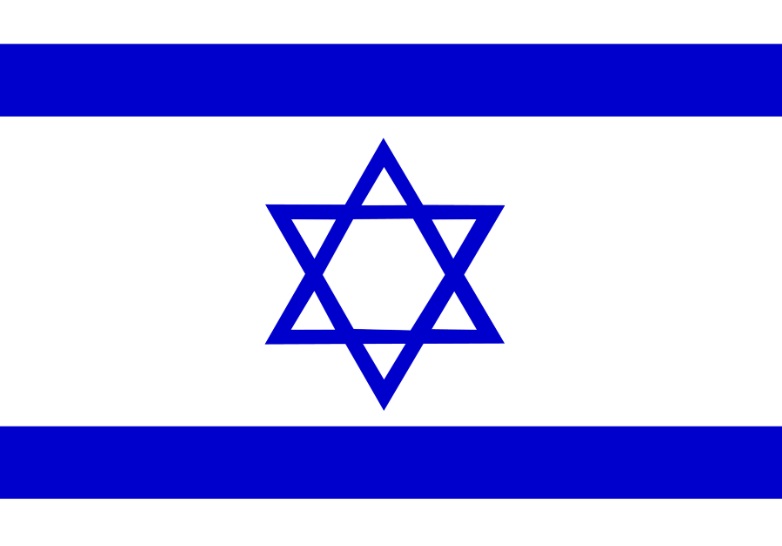 Long Live Israel Long Live Israel |
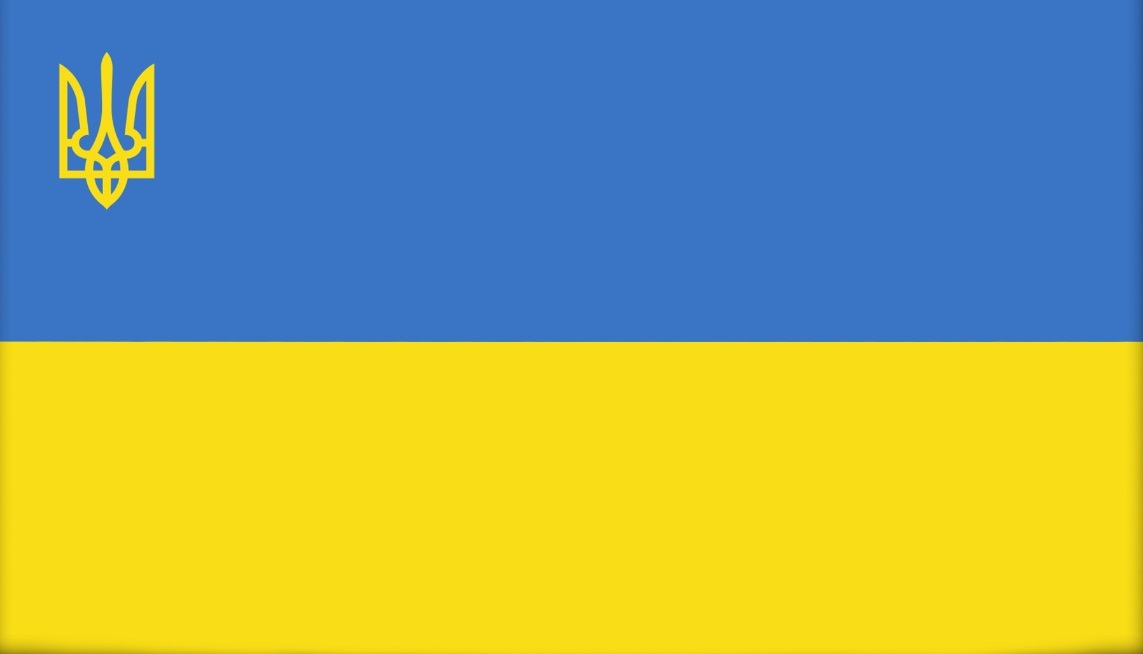 Long Live Ukraine Long Live Ukraine |
 Long Live Taiwan Long Live Taiwan |
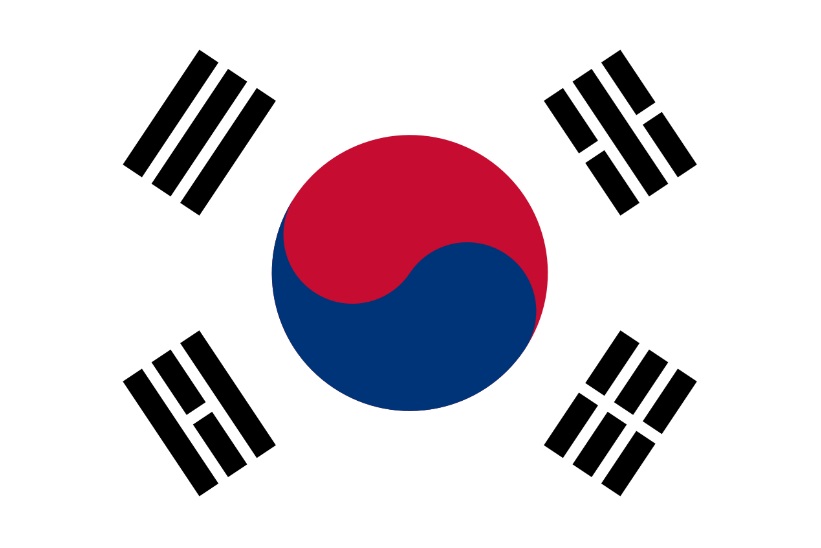 Long Live South Korea Long Live South Korea |
Respond to This Article Below The Last Comment
Comment
Respond to this WebPage immediately below the last comment.
Or,
Comments
Respond to this WebPage immediately below the last comment.
Or,Publish
your own whole new Article from right here.
Wednesday, December 26,
2012
Converted Page to SBI! Release 3.0 BB 2.0.
Date: Mon Nov 17 2014
From: Vic Biorseth
Comment:
Changes pursuant to changing the website URL
and name from
Thinking Catholic Strategic
Center to
Catholic American Thinker.
Pulled the trigger on the 301 MOVE IT option June 1, 2014. Working my way through all the webpages. .
Regards,
Vic
Language and Tone Statement
Please note the language and tone of this monitored Website. This is not the place to just stack up vulgar one-liners and crude rejoinders. While you may support, oppose or introduce any position or argument, submissions must meet our high Roman Catholic and Constitutional American standards of Truth, logical rigor and civil discourse. We will not participate in merely trading insults, nor will we tolerate participants merely trading insults. Participants should not be thin-skinned or over sensitive to criticism, but should be prepared to defend their arguments when challenged. If you don't really have a coherent argument or counter-argument of your own, sit down and don't embarrass yourself. Nonsensical, obscene or blindly and doggedly repetitious anti-Catholic, antisemitic, anti-American, immoral or merely insulting submissions will not be published here. If you have something serious to contribute to the conversation, be prepared to back it up, keep it clean, keep it civil, and it will be published. We humbly apologize to all religious conservative thinkers for the need to even say these things, but the Hard Left is what it always was, the New Leftist Liberals are what they are, and the Internet is what it is.
"Clickbait" advertising links are not acceptable for posting here.
If
you fear intolerant Leftist repercussions, do not use your real name
and do not include email or any identifying information. Elitist Culturally Marxist Pure Authoritarians cannot and will not tolerate your freedom of speech or any opposition to their
rigid authoritarian, anti-equality, anti-life, anti-liberty,
anti-private-property, hedonistic, anti-Constitution, pro-Marxist, pro-Islam, pro-sodomy, pro-sin, anti-Catholic, anti-Christian, anti-Semitic, anti-male, sexist, anti-heterosexual, anti-white, racist, anti-Western,
anti-American, Globalist, anti-Nation, blatantly immoral, totally
intolerant and bigoted point of view. This Site will not publish their intolerant and unwavering screeds.
Copyrighted Material
Solopreneur Opportunity Links, for a
Solo Build It WebSite
Never be lukewarm.
Life itself demands passion.
He who is indifferent to God has already forfeited his soul.
He who is indifferent to politics has already forfeited his liberty.
In America, religion is not mere window dressing and citizenship is not a spectator sport. Do not allow our common destiny as a whole people to just happen without your input.
Seek the Truth; find the Way; live the Life; please God, and live forever.
All Published Articles
By Publication Date
Enter ye in at the narrow gate: for wide is the gate, and
Broad is the way that leadeth to destruction, and many there are who go in
thereat. How narrow is the gate, and strait is the way that leadeth to life:
and few there are that find it! Beware of false prophets, who come to you in
the clothing of sheep, but inwardly they are ravening wolves.
Jesus
Christ; Matthew 7:13–15
Related WebPages
The
purpose of this grouping of articles is to display, defend and promote
orthodox Catholicism in alignment with the magisterial authority of
Rome.
Orthodox Catholicism Pages
Supporting original Deposit of Faith, the Magisterial Authority of Rome and the Catechism of the Catholic Church, to the letter.
Refuting "Brothers Of The Lord", again, for poor Scripture scholars. We have to go over the "Brothers Of The Lord" misinterpretation, over and over again, because newer generations of the misinformed just keep being maleducated.
Who's in Heaven? Catholics. How do we know? The Bible says so. Scripture, Tradition and consistent Church teaching down through the ages confirms it: In Heaven, there are no non-Catholics.
There is no salvation outside the Catholic Church. Once you know Christ founded it, then you must enter it, or not leave it, for there is no salvation outside of it.
The Seven Catholic Sacraments in Scripture. Protestants always ask for Scriptural evidence for all of our Sacraments; so here it is.
Indifferentism and Moral Relativism eats away at Catholic Culture. Catholicism stands against Indifferentism. Where do you stand?
The Latin Mass Page is to be a repository for links to Latin Mass availability. If your Church celebrates the Latin Mass, send a link to the Latin Mass Page.
The Traditional Latin Tridentine Mass Explained, Step By Step.
With Benedict XVI's Motu Proprio 'Summorum Pontificum', the Traditional
Latin Tridentine Mass may need explanation for the uninitiated.
Tridentine Mass Implements and Vestments
Describing the required Tridentine Mass Implements and Vestments
Background history of the recent Catholic reformation (revolution?) in liturgy.
Reform of the Liturgy began with good intentions toward minor changes,
yet almost permanently trashed Latin, and Chant, and, etc., etc., etc.
Benedict XVI's Motu Proprio Summorum Pontificum; Apostolic letter on 1962 Rite.
The Motu Proprio Summorum Pontificum confirms the 1962 Latin Rite as the 'Extraordinary' Roman Liturgical Rite.
The Pope's Letter to Bishops on Summorum Pontificum. Benedict XVI's Letter to Bishops on Summorum Pontificum issued the same day as the Motu Proprio.
The Explanatory Note on Motu Proprio Summorum Pontificum. An 'Explanatory Note on Motu Proprio Summorum Pontificum' issued by the Vatican.
Catholic Marriage Annulment: Is it merely the Catholic version of Easy Divorce. Ecclesial law regarding the Catholic marriage annulment process has not changed, yet the numbers of annulments granted in America have rocketed. Why?
John Paul II, alias John Paul the Great, now becomes Blessed John Paul. Blessed John Paul the Great has been beatified; now, on to sainthood!
Our Lady of Siluva appeared twice in Lithuania, in AD 1608. Our Lady of Siluva appeared with the Christ Child in her arms; the rock on which she stood is preserved in a shrine.
Welcome to Holy Cross (Lithuanian) Roman Catholic Church. Holy Cross Church in Old North Dayton, maintaining the Lithuanian ethnic heritage.
Woodcarver George Mikalauskas produces unique, and custom, Lithuanian crosses. A Dayton, Ohio native of Lithuanian heritage, George prayerfully produces crosses in the ancient Lithuanian style.
The conservative Catholic forum promotes orthodoxy and attacks heterodoxy.
Actually, Conservative Catholic Forum (or Liberal) make no real sense
here. A Catholic teaching is either correct, or it is incorrect,
according to official Catholic Church authority.
“Are you saved” might be the conversation starter with a devout Protestant.
First, are you saved; then, are you saved by having been “born again”
(but not by Baptism) are the two popular questions of Protestantism.
Is the Bible the sole authority for teaching Christianity?
If Holy Scripture is the sole authority for Christian teaching, then, where does it say that in Holy Scripture?
Is faith alone the sole requirement of salvation?
Luther’s dictum says that man is justified by faith alone. Is it true?
The Eucharist is our Emmanuel, our "God is with us." Who else can say it?
Roman Catholicism is centered on Eucharist; it is a central dogma of our faith.
The contentious issue of Infallibility of Papal and Church teaching.
On matters of faith and morals, and matters relating to Divine
Revelation, our central Catholic trust is in the Infallibility of the
Holy Ghost, Peter, and The Church, acting together.
The Thinking Catholic responses to questions re perpetual virginity of Mary.
From the "brothers of the Lord" to "The Davinci Code" to the word
"until" in Matt. 1:24-25, the ancient Hebrew cultural notion of
Professed Perpetual Virginity is doomed to be repeatedly challenged.
Catholic Prayer is described in the Catholic American Thinker.
The Catholic American Thinker describes, defends and presents Catholic Prayer, in all its diversity.
A submission of the “The Church is rotten to the core” argument and its basis.
If indeed the church is rotten to the core then all is lost; unless, of course, the statement is untrue.
"The History Channel" repeats the flagrant categorical lies regarding Pius XII.
Ho hum, heavy sigh, and here we go again. Once again, we see show-biz
"Historians" bypassing actual historical documents in favor of purely
anti-Catholic show-biz fictional works, for fun and profit.
On Straying, Right or Left, from the Catechism.
We have before us, on one side, excesses of "Social Justice" and
"Liberation Theology", and on the other, the "Lefebvre" movement and
related groups. In the center: the Catechism.
The "Enlightenment" birthing of Historical-Critical Scripture analysis.
Historical Criticism of the most paranormal literature ever produced
calls into question the "enlightenment" of the enlightened.
Freedom's Circle: Free Will's relationship to Love, and to Evil. Looking at Freedom, and it's relationship to Good and Evil.
Real Freedom.
The nature of Freedom, in Concept and in actual Fact
Tradition and Moral Discipline Vs. Impulsiveness, Popular Fad and Moral Chaos.
America was born of tradition and moral discipline, and she changes for the best when the process is steady and natural.
Proper catechesis is the glue that keeps the Church and the People Catholic.
Lack of proper education may cost you your liberty; lack of proper catechesis may cost you your soul.
Faith versus Atheism: Is atheism really just a silly superstition?
The Faith versus Atheism argument is at the root of every other important argument.
It's The Inquisition Myth, Vs. the various Catholic and Protestant Inquisitions.
On the history of the inquisitions (plural) that existed, and The
Inquisition, which did not. The Inquisition Myth became a handy club
with which to abuse Catholicism and Catholic history.
The Galileo Inquisition: Contemporary Icon for the Enlightenment and Scientism.
The Galileo Inquisition was no small affair at the time, but over the
centuries it has grown and become a club with which to beat the Church,
and to promote the myth of the "Dark" ages.
The Christian Medieval Crusade, the preceding events, and the aftermath.
The Medieval Crusade describes what is popularly called The Crusades;
Christendom's attempt at self defence, and the freeing of the Holy Land.
The Infamous Byzantine 4th Crusade: A Total Failure in Direction and Purpose.
In the Byzantine 4th Crusade we find classic results of intrigues,
sub-plots and greed overpowering and taking over good intention.
Artificial Contraception: Tool of Materialism with which to destroy Monotheism.
Acceptance of Artificial Contraception marked the single most
destructive turning point in the history of Western Culture, marking the
end of moral norms, foretelling tolerance of anything at all.
Our argument against public despair, hopelessness and pessimism re the future.
Despair is a mortal sin, the opposite of the virtue of hope; it is a
sin unto the death of the soul, a repudiation and rejection of God’s
grace.
Returning to American Founding Principles offers a return to national salvation.
American Founding Principles are reawakened by the mortal threat to the nation posed by Obamunism.
The Fracturing of Christianity: loss of unity of message and teaching authority
The history of the Fracturing of Christianity amplifies the need for ecumenism and healing among men of good will.
Getting ready for Paczki Tuesday. Paczki Tuesday is the old time European version of Fat Tuesday.
What is it that makes us uniquely Catholic? What defines a Catholic culture? Our baptism and our faith make us Catholic, but it is through the living out of our faith that we build and participate in the larger Catholic culture.
More American Imperial Edicts Issuing Forth out of Obamunism. Archbishop Schnurr joins Rick Santorum in identifying American Imperial Edicts from this administration.
Bringing the Liturgy Back to the Real Vatican II. Cardinal Burke Comments on Sacra Liturgia Conference
The Church calls us all to Catholic Evangelism; how do we do that? Catholic Evangelism comes easier than Protestant variants because it has its base in Truth.
Fallen away Catholics may be America's largest Christian denomination. An appeal to Fallen Away Catholics: Christ is calling you home.
Reconciliation with God, through a good Confession with Absolution. Repentance, resolve, confession, absolution, penance, and uplifting, EXHILARATING Reconciliation.
Catholics learn and practice Glossalalia, in the Life In The Spirit seminars. Life in the Spirit seminars, fueling the Catholic Charismatic renewal, bring tongue-speaking "Glossalalia", and being "Slain in the Spirit", to Catholicism.
The List of the Catholic Popes and the Historicity of the Catholic Church. Each of the Catholic Popes has a documented history, and these histories show the Apostolic Succession from Peter.
Nito Gnoci
Linda Kimball
The White House: We Hold These Truths to be Self-Evident, That All Men are Created Equal and Endowed by their Creator with Inalienable Rights
The Sacrificial Fall of Lucifer and the Evolutionary Rise of the Death Cult’s Global Luciferian Religion
Two Kinds of Wisdom and the Lamb’s Book of Life Luke 10: 17-20
Hatred, Envy, Resentment, Vengeance: Why Whites Need Not Apply Lawless Politics of Sin
The evil materialist faith of global Luciferianism, Technocracy, Socialism, and Marxism
Prayer Against Wicked Ideologues Rescue us, O Lord!
System of Lies: Ideological Paradise on Earth and Why the Bloody, Violent Dream Will Not Die
Christendom and Protestant America’s Apostasy into Paganism A Timeline
The presence and influence of powers, principalities, and demons in our age of apostasy into godlessness
Nihilism…All That Exists is Matter and Energy The Worldview that Caused the Collapse of Christendom and Protestant America
Revisiting Nihilism: The Will Turned Toward Evil and the Destruction of Western and American Civilization
The enemies of God, reality, truth, western civilization and our souls Linda Kimbal column
The Last Hour and the New World Order Prayer
Our Call to Battle: Rise of the Spirit of Antichrist Prayer Article: “And this is that spirit of antichrist, whereof ye have heard that it should come; and even now already is it in the world.” (1 John 4:3)
God to Mankind: NOW Do You See the Stupidity, Depravity, and Evil in Your Hearts?
Raising the New Tower-- Occult Evolution: Antediluvian, Babylonian and Modern Expressions
Psychopathy and the Western and American Tyranny of Evil Leftist Progressive Myths
Supernatural Genesis 1-11 vs. Pagan Darwinism God and Liberty or Fallen Mankind and Tyranny
Luke 21: 29-31: Some Signs Of America's Abandonment And Spiritual Bondage
Eternal Paradise Or Hell? How And Why Both Choices Are Freely Made
Luciferian Humanists: Citing the Genesis Account is Evil "Any country grounded in Judaeo-Christian values can't be overthrown until those roots are cut ... "
Who is intolerant because ashamed: Creationists or Evolutionary Theists?
Death of the Christian God in Hearts of All Humans Why America and W. Europe are Committing Suicide
THE WORLDVIEW OF EVIL SPIRITS - an article by Linda Kimball MAGICAL MYSTERY CHURCH
Pagan-Darwinian-Materialism Redoubt of Miserable Self-Deceived Non-Self Nihilists
Americas' Spiritually Dead, Deep State and Ruling Class Nihilists Walking Dead Parasitic Idolaters
Doctrines of Demons and the Modern Pagan and Pantheist Antithesis The West's Greatest Threat
Gnosis: The Main Expression of Paganized Christianity in the New Age Inner Knowing, Self-Salvation
Our Age of Malicious Perversion How Truth, Meaning, and Reality Have Been Perverted
The Serpent's Gnostic Luciferian Elite Oligarchy and Global Powers Demonic Darkness Over the West and America
The Creation Model Versus Modern Pagan Models
2 Corinthians 10:5
What Kind of God Do You Believe In?
2 Cor. 10:5 Destroying 'scientific' arguments for false Gods
Evil Spirits, Death of God, Satanic Inversion Pagan America's Reality of Madness, Demonic Bondage, and Non-Self
Judgment and Wrath The Biblical Explanation for Madness and Evil
The Worldview of Evil Spirits Revolution, Evolution, Materialism, Nihilism, New World Order, and More
Gnosis The Main Expression of Modern Paganized Christianity
America's Transformation Into A Mystical Pantheist God-State What the Death of God Has Wrought
Message to All Wearied Truthtellers: Let Isaiah Be Your Inspiration the Remnant
The Triune God, Supernatural Heaven, Souls, Hell, and Demons Do They Exist?
Teachings of Demons The Aeon of Horus, Reign of God-Men, and End of the Christian God
Revelation 2:7" ...the closing of a steel door – a solemn, cataclysmic slamming of a door."
Systemic Nihilism: End of the Human Race Eternal Damnation of Human Souls
Infernal Apocalyptic Atmosphere Over America Disintegration into nothing
Global and Ruling Class Criminal Elitists Their Ring of Power and Pact with the Spirit of Death and Hell
Blessed is the Man Who Does Not Listen to Falling Stars Who Follow After Damnable Heresies
Darwinism: An Abomination Aborting and Rotting the Church. The falling away and apostasy from the one true and personal Holy Triune Creator God has not ended
The Evil One and the Impenitent Who Receive His Mark“. And the LORD God formed man (and) breathed into his nostrils the breath of life; and man became a living soul.” Genesis 2:7
The Fall of Mankind, the Religion of Evolution, and the Antichrist. "Pride goes before destruction and a haughty spirit before a fall." Proverbs 16:18
Why Secular Liberals Actively Promote Evil. Mentally Retarded Liberals
Cultural Marxism. The Many Hidden Faces of Living Active Communism
The Devil, the Big Bang, Evolution, Extraterrestrials and the Genesis Problem
The Ascension To Power Of Misogyny. Hatred of Women
Gnostic Chiliastic Evolution: Satan's Alternative Plan of Salvation. The Great Reset
Why Proclaiming Jesus Christ the Word Became Flesh is Offensive. The Technocratic Utopian World Order
The Divine Androgyne, Pandemonium, and the Battle for Our Souls. Satan's Rising New World Order
America's Modern Pagan Oligarchy, Aztec Gods, and Human Sacrifice. Isaiah 57 Revisited
The Peace Symbol: Occult Sign Meaning Death Against Christians. Hatred of Jesus Christ and Christianity
Americas’ Spiritually Desolate, Parasitic, Ruling Class Nihilists. Satan and Powers and Principalities
Global Oligarchy, Forces of Darkness, and the Spirit of Antichrist. Forces Darkness Within Church and State
Darwinism: Idol of mind symbolizing hatred of Triune Creator God. And Logical End of America
Is the World a Computer Simulation in the Minds of Robotic Overlords? Magic Science, Transhumanists, Gnostic Physicists.
Your soul: Cost of admission to the Progressive Pagan City of Man. New Egypt, Babylon, Sodom and Gomorrah
Iron Curtain Over American Minds Progressive Marxisms’ Ideological Utopia
Satan’s New World Order Blueprint and Key Strategy. Christian Capitulation To the Serpent's Consensus Process
Chaos, Breakdown, Demoralization, Destruction: America's New Normal. How it came about and where we are going.
Demonic Darkness: America's Invisible Wave of Evil. Staring into the abyss
Cain, Marxism, Leftism and America's ruling class of 'superior' humans. The dragon they have in common
Modernist Christians in a Man-Centered Universe. Scientific Neutrality and Biblical Deconstruction
The Connection Between Baphomet and Why Researchers Are Creating Interspecies Embryos. 2 Corinthians 10:5
Isaiah 57 revisited: America's progressive pagan elites. Staring into the Abyss
Evolutionary Theism Implies That Christ is Wrong About Creation. "For if you believed Moses, you would believe Me, for he wrote about Me. But if you do not believe his writings, how will you believe My words?" John 5:46-47
Utopianism. Progressive Utopian Cultural Marxism Poisoning Minds, Churches, Schools, Politics
Acts 17:18-19-modern pagan and pantheist antithesis of the Word of God Ecclesiates 1:9 "What has been is what will be.."
Trotsky's Permanent Revolution From Hell In America. The Soviet System in America
Why Transgenderism Is Being Forced Upon America and Our Children. The Divine Androgyne
The Evil Eye Of Envy: Why Being ‘White’ Is Offensive To Some People. No Vice Worse Than Envy
Absolute Nothingness and Non-Self: The Reigning Worldview of Global Power Elites and Western Ruling Classes
What is Evil? Man-made alternative realities
Cliff Kincaid
Trump is Destroying Reagan's Legacy By Cliff Kincaid
Trump is a Marked Man By Cliff Kincaid
Terrorist Attack in Baltimore By Cliff Kincaid
Moscow Terror Attack is Another KGB Operation to Fool the West
Obama’s New Nazi-Communist Alliance
On the "Days Of Rage" Planned For The 2024 Marxocrat Party Convention Some of you just couldn't believe that the formerly Democrat
(Confederate) Party had already gone totally Communist before the 1968
Party Convention
Making Russia Great Again By Cliff Cinkaid
De-Nazification and De-Communization in Russia The The mutual non-aggression Hitler-Stalin Pact, which started World War II, has been carefully “forgotten”
Climate Emergency To Produce a New World Order By Cliff Kincaid
The Next Phase of Obama’s “Permanent Revolution” By Cliff Kincaid
Evil in the White House In This War, The Enemy Is In The Ranks, Standing Right Next To You
Satanism, Communism: What's The Difference? Look To The Roots Of Communism
Fox Is the Leading "Trans" Channel There are some rather peculiar goings-on at the Fox News Channel.
Trump and His Communist Enemies The Demonized Joe McCarthy Turned Out To Be Accurate In Everything He Claimed: Fox News Is Wrong About Him And About Much More
The Five Stooges on Capitol Hill They Think We Need Even More Doped No-Hopers In The American Intelligence Community
The Biden Doctrine of Demoralization and Defeat By Cliff Kincaid
A Republican Church Committee? Do Pro-American Republicans Even Know Who Frank Church Really Was?
A Top to Bottom Housecleaning of America When we clean our house, my wife has a slogan, “Top to bottom,” meaning you have to target the whole house. The same advice applies to nations.
China's Mass Murder Experiment Phase Two
Bury The Dead And Move On Fuggedaboutit!
9/11 Truth This is the real 9/11 Truth: Our “intelligence” agencies are infiltrated.
Moving Toward Gorbachev’s “World of Communism” It's called the Monster Plot.
The Errors of Russia, the Dupes of Putin, and Another Holocaust Can The Increasingly Faithless Free World Be Saved From Russia?
World War Quietly Conquering A Distracted and Blithely Unaware World. Could it actually be Satan's world war on despised humanity?
Stand With Ukraine Against Russia and China By Cliff Kincaid
Tucker Carlson Carlson Gets His Comeuppance. Tucker's View: It is not moral for us to intervene in support of any nation's (Ukraine's) democratic self-determination and against Soviet military expansion.
The Need for Secure Borders. Have we so easily forgotten what borders are for? Have we forgotten that evil exists in the world? Have we forgotten how to keep apart from this evil?
Can Ukraine Survive Putin and Biden? Can America? Can the Free World? Can Faith in God?
The Soviet Union: Back From The Dead The Return of the Evil Empire
Could an American Surrender be in the offing with Biden at the wheel? Is this not the perfect time for Communism to strike, with Commies now governing America, China and Russia? What would Biden do?
Abortion and Communism. If you ever wondered where all the popular abortion-contraception-sexuality-perversion nuttiness came from, look to Marx's Communist Manifesto.
The Secret Life of Martin Luther King, Jr. A life almost totally at odds with his reputation as a minister of the Gospel.
"We belong to the Church militant; and She is militant because on earth the powers of darkness are ever restless to encompass Her destruction. Not only in the far-off centuries of the early Church, but down through the ages and in this our day, the enemies of God and Christian civilization make bold to attack the Creator's supreme dominion and sacrosanct human rights." --Pope Pius XII
"It is not lawful to take the things of others to give to the poor. It is a sin worthy of punishment, not an act deserving a reward, to give away what belongs to others." --St. Francis of Assisi
Truth is incontrovertible. Malice may attack it, ignorance may deride it, but in the end, there it is.—Winston Churchill
The smallest minority on earth is the individual. Those who deny individual rights cannot claim to be defenders of minorities.—Ayn Rand
Atheist Genesis:
In the beginning there was nothing, and nothing happened to nothing.And then nothing accidentally exploded and created everything.
And then some bits of everything accidentally encountered other bits of everything and formed some new kinds of everything.
And then some bits of everything accidentally arranged themselves into self-replicating bits of everything.
And then some self-replicating bits of everything accidentally arranged themselves into dinosaurs.
See?
(See The Darwinism Pages)
If you can't find the page you're looking for, try the
SITE MAP.








